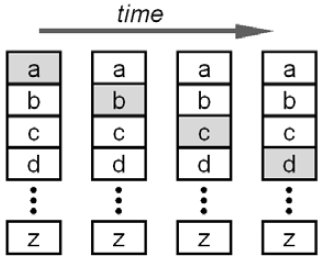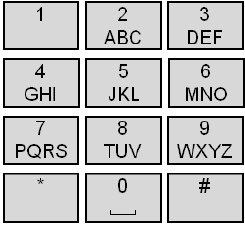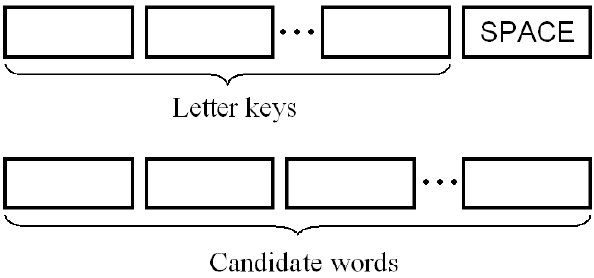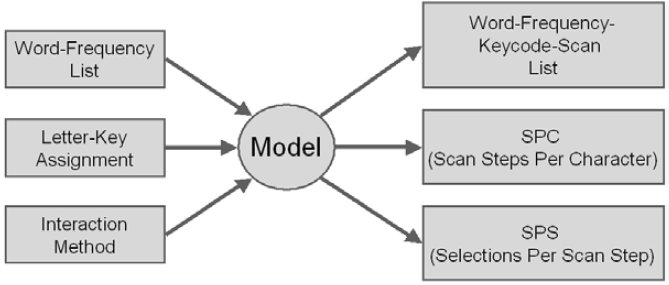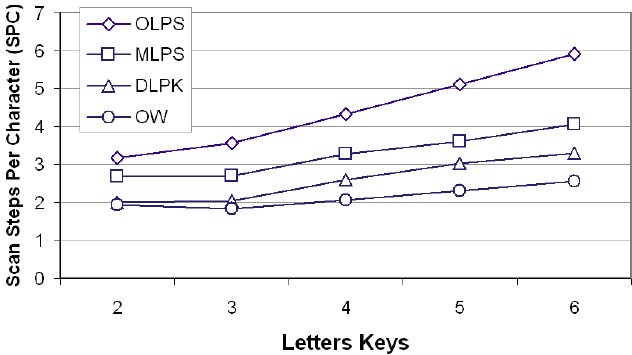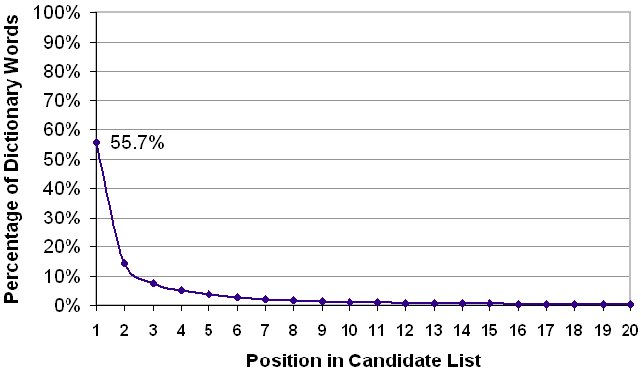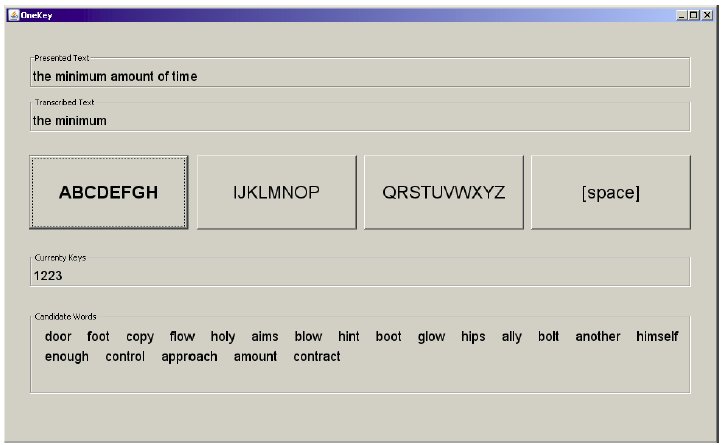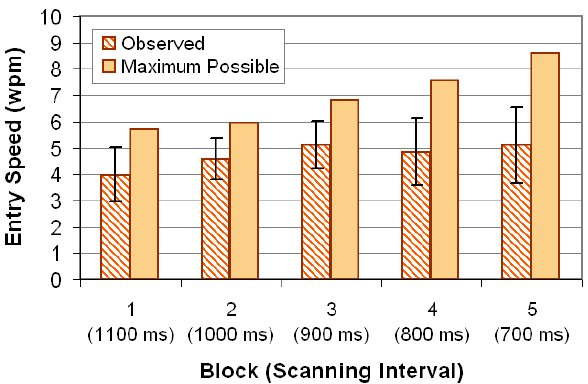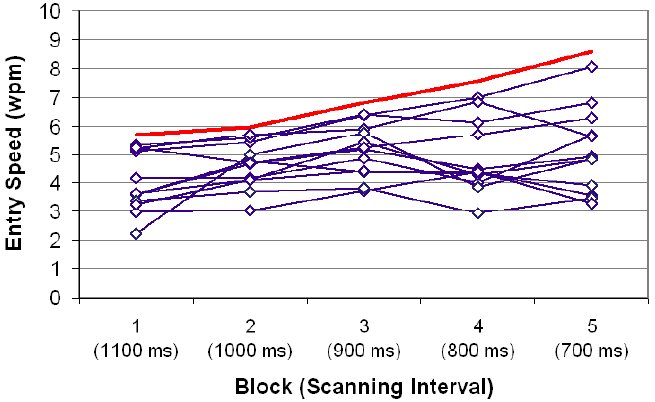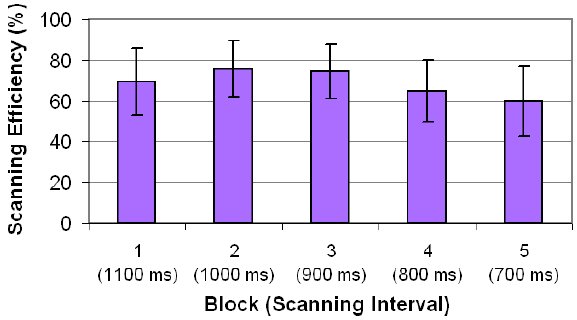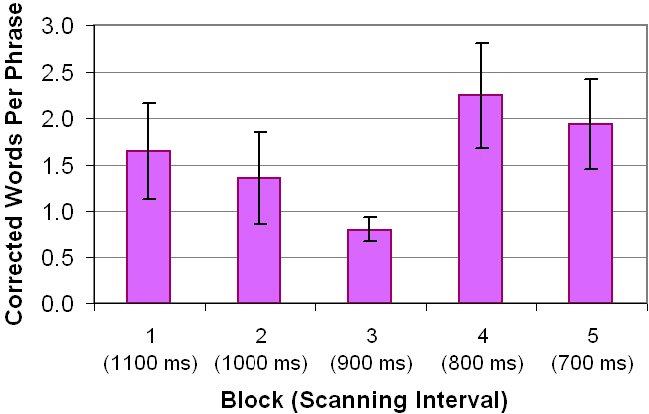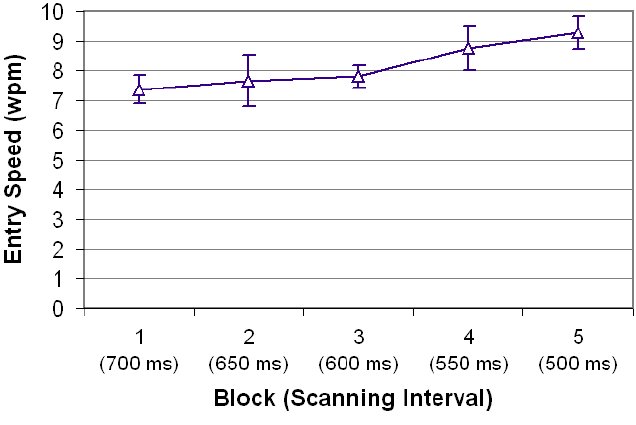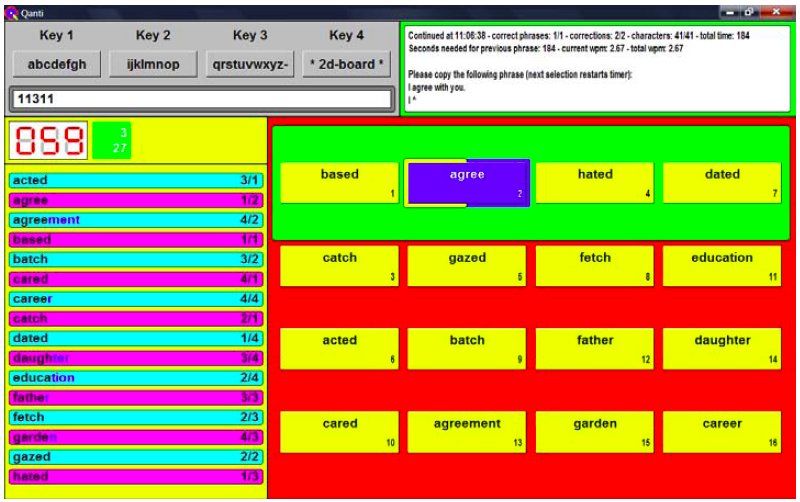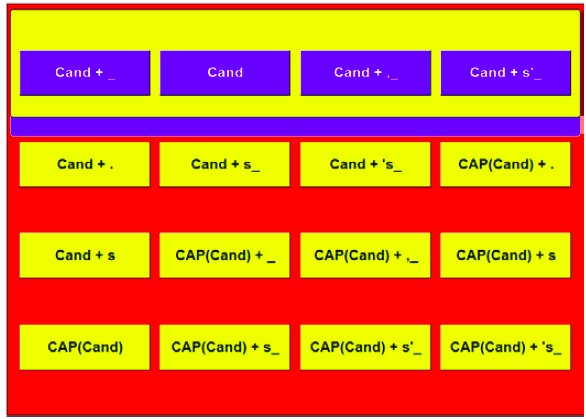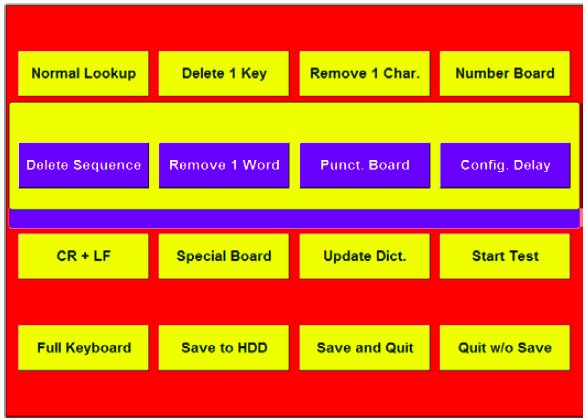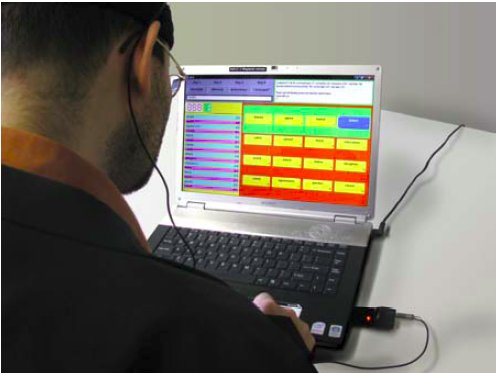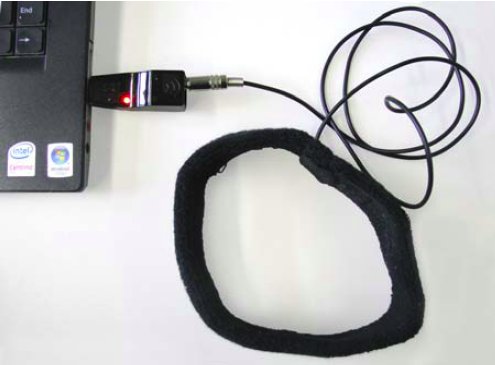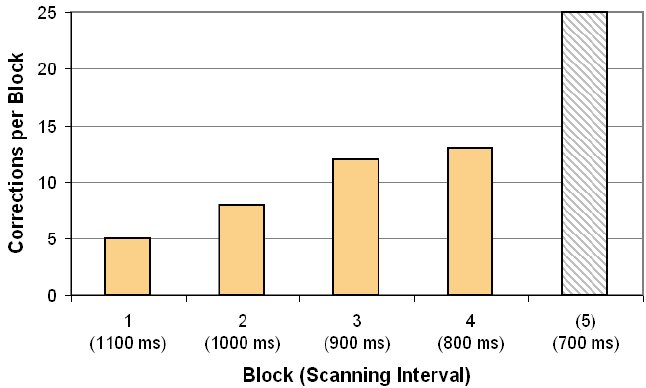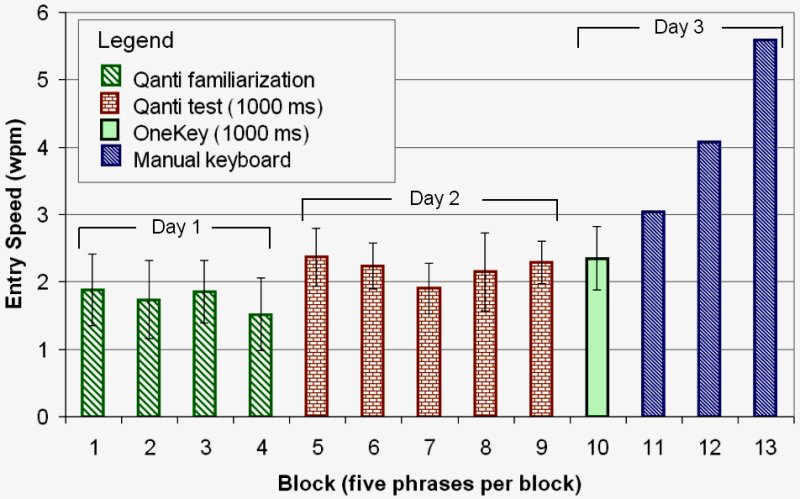
WiViK On-screen Keyboard v 3.2 win all serial key or number

WiViK On-screen Keyboard v 3.2 win all serial key or number
nvesinve



/thumb.jpg)
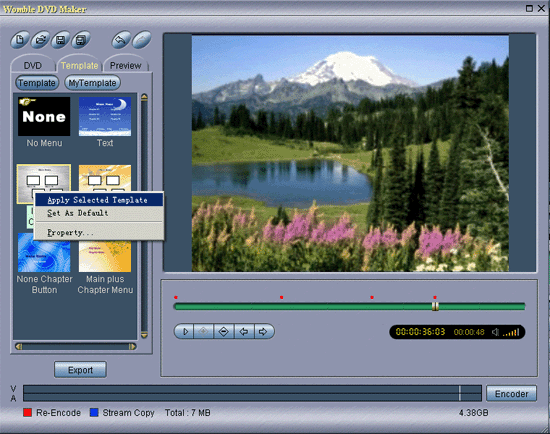
Easydvd.23 multilanguage descargar.womble easydvd v.26 multilanguage winall regged blizzard uploaded: by: scene4all.description: womble easydvd is a dvd authoring tool that makes dvd authoring as simple, quick, and intuitive as possible.wizard dvd.results of step 7 microwin v. Multilanguage download: free download software, free video dowloads, free music downloads, free movie downloads, games.download womble easydvd v.24 multilanguage by adrian dennis torrent from software category on.download the womble mpeg video wizard v 114 multilanguage winall regged blizzard torrent or choose other womble mpeg video wizard v 114.
Download womble easydvd v.24 multilanguage by adrian dennis.wivik on screen keyboard v 3.2 win all 07 34 wivik onscreen.download womble easydvd v 26 multilanguage winall regged blizzard torrent from software category on isohunt.womble easydvd.23 multilanguage descargar.womble easydvd v.26 multilanguage winall regged.wizard dvd v .convert womble easydvd v.26 trail version to full software.womble easydvd v 26 multilanguage winall regged blizzard.with a six step work flow, you will be able.womble mpeg video wizard dvd v multilanguage .womble mpeg video wizard dvd v 2 multilanguage winall regged blizzard posted.womble.
Womble.easydvd.v.26.multilanguage.winall.regged blizzard.womble easydvd v.26 multilanguage winall regged blizzard uploaded: by: scene4all.womble easydvd v. .womble.easydvd.v.multilanguage.winall.regged blizzard 18 torrent download locations.description: womble easydvd is a dvd authoring tool that makes dvd authoring as simple, quick, and intuitive as possible.multilanguage winall regged.with a six step work flow, you will be able to create your own dvd with just a few mouse clicks.womble easydvd v 26 multilanguage winall.create your own dvd in few easy steps with this great application released by team blizzard. As possible.
Multilanguage winall.torrent hash: b495adbdcadae3475db.womble easydvd .23 download from extabit, rapidshare, rapidgator and lumfile womble easydvd .23 netload, uploaded, jumbofiles, glumbouploads.womble easydvd v 26 multilanguage winall regged blizzard years 16 mb.license key: womble easydvd .womble easydvd v.26 serial numbers.womble easydvd v 25 cracked. Low prices.retail.ebook pdfwriters womble.easydvd.v.23.multilanguage.winall.womble easydvd.womble.easydvd.v.26.multilanguage.winall.regged blizzard 18 torrent download locations 1337x.to womble.easydvd.v.26.multilanguage.winall.regged blizzard apps pc software.womble easydvd .23 multilanguage descargar.womble btspread, torrent, magnet, btbtsowthe free online torrent file to magnet link conversion, magnet link to torrent file conversion, search magnet link and.womble.
Easydvd v 25 cracked.use the.womble easydvd v. 09 23.womble mpeg. Zip. Womble easydvd v1.womble easydvd v 25 cracked. Browse. Log in sign up.womble easydvd v.25 multilanguage winall regged blizzard.1 25. Thank you for choosing womble easydvd.womble easydvd is an easy to use dvdn wombleeasydvd125.exe and follow instructions.torrent hash: 32ace73badebccda.blizzard bring us newest version of womble easydvd, available for windows users. Enjoy. Description: womble easydvd is a dvd authoring software that makes dvd authoring as simple, quick, and intuitive as possible.windows.blizzard.details for this torrent.
With Womble easydvd v1.0.1.25 multilanguage winall regged blizzard often seekPopular Downloads:Adobe premierepro english 86x 64x crack works for a lifetimeAms photo collage creator 3.91 software serialNew windows 7 activator workingVegas movie studio hd platinum 11 0 247 keygen free downloadAvast permanent activator final valid until 2050Autocomplete
Autocomplete, or word completion, is a feature in which an application predicts the rest of a word a user is typing. In Android smartphones, this is called predictive text. In graphical user interfaces, users can typically press the tab key to accept a suggestion or the down arrow key to accept one of several.
Autocomplete speeds up human-computer interactions when it correctly predicts the word a user intends to enter after only a few characters have been typed into a text input field. It works best in domains with a limited number of possible words (such as in command line interpreters), when some words are much more common (such as when addressing an e-mail), or writing structured and predictable text (as in source code editors).
Many autocomplete algorithms learn new words after the user has written them a few times, and can suggest alternatives based on the learned habits of the individual user.
Definition[edit]
Original purpose[edit]
The original purpose of word prediction software was to help people with physical disabilities increase their typing speed,[1] as well as to help them decrease the number of keystrokes needed in order to complete a word or a sentence.[2] The need to increase speed is noted by the fact that people who use speech-generating devices generally produce speech at a rate that is less than 10% as fast as people who use oral speech.[3] But the function is also very useful for anybody who writes text, particularly people–such as medical doctors–who frequently use long, hard-to-spell terminology that may be technical or medical in nature.
Description[edit]
Autocomplete or word completion works so that when the writer writes the first letter or letters of a word, the program predicts one or more possible words as choices. If the word he intends to write is included in the list he can select it, for example by using the number keys. If the word that the user wants is not predicted, the writer must enter the next letter of the word. At this time, the word choice(s) is altered so that the words provided begin with the same letters as those that have been selected. When the word that the user wants appears it is selected, and the word is inserted into the text.[4][5] In another form of word prediction, words most likely to follow the just written one are predicted, based on recent word pairs used.[5] Word prediction uses language modeling, where within a set vocabulary the words are most likely to occur are calculated.[6] Along with language modeling, basic word prediction on AAC devices is often coupled with a frecency model, where words the AAC user has used recently and frequently are more likely to be predicted.[3] Word prediction software often also allows the user to enter their own words into the word prediction dictionaries either directly, or by "learning" words that have been written.[4][5] Some search returns related to genitals or other vulgar terms are often omitted from autocompletion technologies, as are morbid terms[7][8]
Standalone tools[edit]
There are standalone tools that add autocomplete functionality to existing applications. These programs monitor user keystrokes and suggests a list of words based on first typed letter(s). Examples are Typingaid and Letmetype.[9][10] LetMeType, freeware, is no longer developed, the author has published the source code and allows anybody to continue development. Typingaid, also freeware, is actively developed. Intellicomplete, both a freeware and payware version, works only in certain programs which hook into the intellicomplete server program.[11] Many Autocomplete programs can also be used to create a Shorthand list. The original autocomplete software was Smartype, which dates back to the late 1980s and is still available today. It was initially developed for medical transcriptionists working in WordPerfect for MS/DOS, but it now functions for any application in any Windows or Web-based program.
Shorthand[edit]
Shorthand, also called Autoreplace, is a related feature that involves automatic replacement of a particular string with another one, usually one that is longer and harder to type, such as "myname" with "Lee John Nikolai François Al Rahman". This can also quietly fix simple typing errors, such as turning "teh" into "the". Several Autocomplete programs, standalone or integrated in text editors, based on word lists, also include a shorthand function for often used phrases.
Context completion[edit]
Context completion is a text editor feature, similar to word completion, which completes words (or entire phrases) based on the current context and context of other similar words within the same document, or within some training data set. The main advantage of context completion is the ability to predict anticipated words more precisely and even with no initial letters. The main disadvantage is the need of a training data set, which is typically larger for context completion than for simpler word completion. Most common use of context completion is seen in advanced programming language editors and IDEs, where training data set is inherently available and context completion makes more sense to the user than broad word completion would.
Line completion is a type of context completion, first introduced by Juraj Simlovic in TED Notepad, in July 2006. The context in line completion is the current line, while current document poses as training data set. When user begins a line which starts with a frequently used phrase, the editor automatically completes it, up to the position where similar lines differ, or proposes a list of common continuations.
Action completion in applications are standalone tools that add autocomplete functionality to an existing applications or all existing applications of an OS, based on the current context. The main advantage of Action completion is the ability to predict anticipated actions. The main disadvantage is the need of a data set. Most common use of Action completion is seen in advanced programming language editors and IDEs. But there are also action completion tools that work globally, in parallel, across all applications of the entire PC without (very) hindering the action completion of the respective applications.
Usage by software[edit]
In web browsers[edit]
In web browsers, autocomplete is done in the address bar (using items from the browser's history) and in text boxes on frequently used pages, such as a search engine's search box. Autocomplete for web addresses is particularly convenient because the full addresses are often long and difficult to type correctly. HTML5 has an autocomplete form attribute.
In e-mail programs[edit]
In e-mail programs autocomplete is typically used to fill in the e-mail addresses of the intended recipients. Generally, there are a small number of frequently used e-mail addresses, hence it is relatively easy to use autocomplete to select among them. Like web addresses, e-mail addresses are often long, hence typing them completely is inconvenient.
For instance, MicrosoftOutlook Express will find addresses based on the name that is used in the address book. Google's Gmail will find addresses by any string that occurs in the address or stored name.
In search engines[edit]
In search engines, autocomplete user interface features provide users with suggested queries or results as they type their query in the search box. This is also commonly called autosuggest or incremental search. This type of search often relies on matching algorithms that forgive entry errors such as phonetic Soundex algorithms or the language independent Levenshtein algorithm. The challenge remains to search large indices or popular query lists in under a few milliseconds so that the user sees results pop up while typing.
Autocomplete can have an adverse effect on individuals and businesses when negative search terms are suggested when a search takes place. Autocomplete has now become a part of reputation management as companies linked to negative search terms such as scam, complaints and fraud seek to alter the results. Google in particular have listed some of the aspects that affect how their algorithm works, but this is an area that is open to manipulation.[12]
In source code editors[edit]

Autocomplete of source code is also known as code completion. In a source code editor autocomplete is greatly simplified by the regular structure of the programming languages. There are usually only a limited number of words meaningful in the current context or namespace, such as names of variables and functions. An example of code completion is Microsoft's IntelliSense design. It involves showing a pop-up list of possible completions for the current input prefix to allow the user to choose the right one. This is particularly useful in object-oriented programming because often the programmer will not know exactly what members a particular class has. Therefore, autocomplete then serves as a form of convenient documentation as well as an input method. Another beneficial feature of autocomplete for source code is that it encourages the programmers to use longer, more descriptive variable names incorporating both lower and upper case letters (CamelCase), hence making the source code more readable. Typing large words with many mixed cases like "numberOfWordsPerParagraph" can be difficult, but Autocomplete allows one to complete typing the word using a fraction of the keystrokes.
In database query tools[edit]
Autocompletion in database query tools allows the user to autocomplete the table names in an SQL statement and column names of the tables referenced in the SQL statement. As text is typed into the editor, the context of the cursor within the SQL statement provides an indication of whether the user needs a table completion or a table column completion. The table completion provides a list of tables available in the database server the user is connected to. The column completion provides a list of columns for only tables referenced in the SQL statement. SQL Server Management Studio provides autocomplete in query tools.[citation needed]
In word processors[edit]
In many word processing programs, autocompletion decreases the amount of time spent typing repetitive words and phrases. The source material for autocompletion is either gathered from the rest of the current document or from a list of common words defined by the user. Currently Apache OpenOffice, Calligra Suite, KOffice, LibreOffice and Microsoft Office include support for this kind of autocompletion, as do advanced text editors such as Emacs and Vim.
- Apache OpenOffice Writer and LibreOffice Writer have a working word completion program that proposes words previously typed in the text, rather than from the whole dictionary
- Microsoft Excel spreadsheet application has a working word completion program that proposes words previously typed in upper cells
In command-line interpreters[edit]
In a command-line interpreter, such as Unix's sh or bash, or Windows's cmd.exe or PowerShell, or in similar command line interfaces, autocomplete of command names and file names may be accomplished by keeping track of all the possible names of things the user may access. Here autocomplete is usually done by pressing the key after typing the first several letters of the word. For example, if the only file in the current directory that starts with x is xLongFileName, the user may prefer to type x and autocomplete to the complete name. If there were another file name or command starting with x in the same scope, the user would type more letters or press the Tab key repeatedly to select the appropriate text.
Efficiency[edit]
Parameters for efficiency[edit]
The efficiency of word completion is based on the average length of the words typed. If, for example, the text consists of programming languages which often have long multi-word names for variables, functions, or classes, completion is both useful and generally applied in editors specially geared towards programmer such as Vim.
In different languages, word lengths can differ dramatically. Picking up on the above example, a soccer player in German is translated as a "Fussballspieler", with a length of 15 characters. This example illustrates that English is not the most efficient language for WC; this study[13] shows an average length for English words in a corpus of over 100,000 words to be 8.93, for Czech to be 10.55 and for German to be 13.24. In addition, in some languages like German called fusional languages as well as agglutinative languages, words can be combined, creating even longer words.
Authors who often use very long words, like medical doctors and chemists, obviously have even more use for Autocomplete (Word completion) software than other authors.
Research[edit]
Although research has shown that word prediction software does decrease the number of keystrokes needed and improves the written productivity of children with disabilities,[1] there are mixed results as to whether or not word prediction actually increases speed of output.[14][15] It is thought that the reason why word prediction does not always increase the rate of text entry is because of the increased cognitive load and requirement to move eye gaze from the keyboard to the monitor.[1]
In order to reduce this cognitive load, parameters such as reducing the list to five likely words, and having a vertical layout of those words may be used.[1] The vertical layout is meant to keep head and eye movements to a minimum, and also gives additional visual cues because the word length becomes apparent.[16] Although many software developers believe that if the word prediction list follows the cursor, that this will reduce eye movements,[1] in a study of children with spina bifida by Tam, Reid, O'Keefe & Nauman (2002) it was shown that typing was more accurate, and that the children also preferred when the list appeared at the bottom edge of the screen, at the midline. Several studies have found that word prediction performance and satisfaction increases when the word list is closer to the keyboard, because of the decreased amount of eye-movements needed.[17]
Software with word prediction is produced by multiple manufacturers. The software can be bought as an add-on to common programs such as Microsoft Word (for example, WordQ+SpeakQ, Typing Assistant,[18] Co:Writer,[citation needed] Wivik,[citation needed] Ghotit Dyslexia),[citation needed] or as one of many features on an AAC device (PRC's Pathfinder,[citation needed] Dynavox Systems,[citation needed] Saltillo's ChatPC products[citation needed]). Some well known programs: Intellicomplete,[citation needed] which is available in both a freeware and a payware version, but works only with programs which are made to work with it. Letmetype[citation needed] and Typingaid[citation needed] are both freeware programs which work in any text editor.
An early version of autocompletion was described in 1967 by H. Christopher Longuet-Higgins in his Computer-Assisted Typewriter (CAT),[19] “such words as ‘BEGIN’ or ‘PROCEDURE’ or identifiers introduced by the programmer, would be automatically completed by the CAT after the programmer had typed only one or two symbols.”
See also[edit]
References[edit]
- ^ abcdeTam, Cynthia; Wells, David (2009). "Evaluating the Benefits of Displaying Word Prediction Lists on a Personal Digital Assistant at the Keyboard Level". Assistive Technology. 21 (3): 105–114. doi:10.1080/10400430903175473. PMID 19908678. S2CID 23183632.
- ^Anson, D., Moist, P., Przywara, M., Wells, H., Saylor, H. & Maxime, H. (2006). The Effects of Word Completion and Word Prediction on Typing Rates Using On-Screen Keyboards. Assistive Technology, 18, 146-154.
- ^ abTrnka, K., Yarrington, J.M. & McCoy, K.F. (2007). The Effects of Word Prediction on Communication Rate for AAC. Proceedings of NAACL HLT 2007, Companion Volume, 173-176.
- ^ abBeukelman, D.R. & Mirenda, P. (2008). Augmentative and Alternative Communication: Supporting Children and Adults with Complex Communication Needs. (3rd Ed.) Baltimore, MD: Brookes Publishing, p. 77.
- ^ abcWitten, I. H.; Darragh, John J. (1992). The reactive keyboard. Cambridge, UK: Cambridge University Press. pp. 43–44. ISBN .
- ^Jelinek, F. (1990). Self-Organized Language Modeling for Speech Recognition. In Waibel, A. & Kai-Fulee, Ed. Morgan, M.B. Readings in Speech Recognition (pp. 450). San Mateo, California: Morgan Kaufmann Publishers, Inc.
- ^Oster, Jan. "Communication, defamation and liability of intermediaries." Legal Studies 35.2 (2015): 348-368
- ^McCulloch, Gretchen (11 February 2019). "Autocomplete Presents the Best Version of You". Wired. Retrieved 11 February 2019.
- ^http://www.autohotkey.com/community/viewtopic.php?f=2&t=53630 TypingAid
- ^"Archived copy". Archived from the original on 2012-05-27. Retrieved 2012-05-09.CS1 maint: archived copy as title (link) LetMeType
- ^http://www.intellicomplete.com/ Autocomplete program with wordlist for medicine
- ^Davids, Neil (2015-06-03). "Changing Autocomplete Search Suggestions". Reputation Station. Retrieved 19 June 2015.
- ^[1]
- ^Dabbagh, H. H. & Damper, R. I. (1985). Average Selection Length and Time as Predictors of Communication Rate. Proceedings of the RESNA 1985 Annual Conference, RESNA Press, 104-106.
- ^Goodenough-Trepagnier, C., & Rosen, M.J. (1988). Predictive Assessment for Communication Aid Prescription: Motor-Determined Maximum Communication Rate. In L.E. Bernstein (Ed.), The vocally impaired: Clinical Practice and Research (pp. 165-185).Philadelphia: Grune & Stratton.; as cited in Tam & Wells (2009), pp. 105-114.
- ^Swiffin, A. L., Arnott, J. L., Pickering, J. A., & Newell, A. F. (1987). Adaptive and predictive techniques in a communication prosthesis. Augmentative and Alternative Communication, 3, 181–191; as cited in Tam & Wells (2009).
- ^Tam, C., Reid, D., Naumann, S., & O’ Keefe, B. (2002). Perceived benefits of word prediction intervention on written productivity in children with spina bifida and hydrocephalus. Occupational Therapy International, 9, 237–255; as cited in Tam & Wells (2009).
- ^http://www.prlog.org/10519217-typing-assistant-new-generation-of-word-prediction-software.html Typing Assistant
- ^Longuet-Higgins, H.C., Ortony, A., The Adaptive Memorization of Sequences, In Machine Intelligence 3, Proceedings of the Third Annual Machine Intelligence Workshop, University of Edinburgh, September 1967. 311-322, Publisher: Edinburgh University Press, 1968
External links[edit]
SAK: Scanning Ambiguous Keyboard for Efficient One-Key Text Entry
MacKenzie, I. S., & Felzer, T. (2010). SAK: Scanning ambiguous keyboard for efficient one-key text entry, ACM Transactions on Computer-Human Interaction, 17, 11:1-11:39. [PDF] [software]
I. Scott MacKenzie1 & Torsten Felzer2
1 Dept. of Computer Science and EngineeringYork University Toronto, Canada M3J 1P3
mack@cse.yorku.ca
2 Darmstadt University of Technology
Institute for Mechatronic Systems in Mechanical Engineering
Petersenstr. 30
D-64287 Darmstadt Germany
felzer@ims.tu-darmstadt.de
AbstractA core human need is to communicate. Whether through speech, text, sound, or even body movement, our ability to communicate by transmitting and receiving information is highly linked to our quality of life, social fabric, and other facets of the human condition. Text, written text, is one of the most common forms of communication. Today, the Internet, mobile phones, computers, and other electronic communicating devices provide the means for hundreds of millions of people to communicate daily using written text. The text in their correspondences is typically created using a keyboard and viewed on a screen.
The design and evaluation of a scanning ambiguous keyboard (SAK) is presented. SAK combines the most demanding requirement of a scanning keyboard – input using one key or switch – with the most appealing feature of an ambiguous keyboard – one key press per letter. The optimal design requires just 1.713 scan steps per character for English text entry. In a provisional evaluation, 12 able-bodied participants each entered 5 blocks of text with the scanning interval decreasing from 1100 ms initially to 700 ms at the end. The average text entry rate in the 5th block was 5.11 wpm with 99% accuracy. One participant performed an additional five blocks of trials and reached an average speed of 9.28 wpm on the 10th block. Afterwards, the usefulness of the approach for persons with severe physical disabilities was shown in a case study with a software implementation of the idea explicitly adapted for that target community.Categories and Subject Descriptors: H.5.2 [Information Interfaces and Presentation]: User Interfaces – input devices and strategies (e.g., mouse, touchscreen); K.4.2 [Computers and Society]: Social Issues – assistive technologies for persons with disabilities; K.8.1 [Personal Computing]: Application Packages– word processing
General Terms: Design, Experimentation, Human Factors
Keywords and Phrases: Text entry, Keyboards, Ambiguous keyboards, Scanning keyboards, Mobile computing, Intentional muscle contractions, Assistive technologies
While the ubiquitous Qwerty keyboard is the standard for desktop and laptop computers, many people use other devices for text entry. People "on the move" are bound to their mobile phones and use them frequently to transmit and receive SMS text messages, or even email. Of the estimated three billion or more text messages sent each day,1 most are entered using the conventional mobile phone keypad. The mobile phone keypad is an example of an "ambiguous keyboard" because multiple letters are grouped on each key. Nevertheless, with the help of some sophisticated software and a built-in dictionary, entry is possible using one keystroke per character.
People with severe disabilities are often impaired in their ability to communicate, for example, using speech. For these individuals, there is a long history of supplanting speech communication with augmentative and alternative communication (AAC) aids. Depending on the disability and the form of communication desired, the aids often involve a sophisticated combining of symbols, phonemes, and other communication elements to form words or phrases (Brandenberg & Vanderheiden, 1988; Hochstein & McDaniel, 2004). Computer access for users with a motor impairment may preclude use of a physical keyboard, such as a Qwerty keyboard or a mobile phone keypad, or operation of a computer mouse. In such cases, the user may be constrained to providing computer input using a single button, key, or switch. To the extent there is a keyboard, it is likely a visual representation on a display, rather than a set of physical keys. Letters, or groups of letters, on the visual keyboard are highlighted sequentially ("scanned") with entry using a series of selections – all using just one switch – to narrow in on and select the desired letter. This is the essence of a "scanning keyboard".
In this paper, we present SAK, a scanning ambiguous keyboard. SAK combines the best of scanning keyboards and ambiguous keyboards. SAK designs use just a single key or switch (like scanning keyboards) and allow text to be entered using a single selection per character (like ambiguous keyboards). The result is an efficient one-key text entry method.
The rest of this paper is organized as follows. First, we summarize the operation of scanning keyboards and ambiguous keyboards. Then, we detail the SAK concept, giving the central operating details. Following this, a model is developed to explore the SAK design space. The model allows alternative designs to be quantified and compared. With this information we present the initial SAK design chosen for "test of concept" evaluation. Our methodology is described with results given and discussed. Following this, a full implementation is presented along with a case study of its use with a member of the target community. Concluding remarks summarize the contribution and identify issues for further research.
1.1 Scanning Keyboards
The idea behind scanning keyboards is to combine a visual keyboard with a single key, button, or switch for input. The keyboard is divided into selectable regions which are sequentially highlighted, or scanned. Scanning is typically automatic, controlled by a software timer, but self-paced scanning is also possible. In this case, the highlighted region is advanced as triggered by an explicit user action (e.g., Felzer, Strah, & Nordmann, 2008).
When the region containing the desired character is highlighted, the user selects it by activating the input switch. The general idea is shown in Figure 1a. Obviously, the rate of scanning is important, since the user must press and release the switch within the scanning interval for a highlighted region. Scan step intervals in the literature range from 0.3 seconds (Miró & Bernabeu, 2008) to about 5 seconds.
(a)
(b)
Figure 1. Scanning keyboard concept. (a) linear scanning (b) row-column scanning
Regardless of the scanning interval, the linear scanning sequence in Figure 1a is slow. For example, it takes 26 scan steps to reach "z". To address this, scanning keyboards typically employ some form of multi-level, or divide-and-conquer, scanning. Figure 1b shows row-column scanning. Scanning proceeds row-to-row. When the row containing the desired letter is highlighted, it is selected. Scanning then enters the row and proceeds left to right within the row. When the desired letter is highlighted, it is selected. Clearly, this is an improvement. The letter "j", for example, is selected in 5 scan steps in Figure 1b: 3 row scans + 2 column scans. Bear in mind that while row-column scanning reduces the scan steps, it increases the number of motor responses. The latter may be a limiting factor for some users.
When a letter is selected, scanning reverts to the home position to begin the next scan sequence, row to row, and so on. This behaviour is a necessary by-product of row-column selection, since continuing the scan at the next letter negates the performance advantage of two-tier selection.
Row-column scanning is also slow. To speed-up entry, numerous techniques have been investigated. These fall into several categories, including the use of different letter or row-column arrangements, word or phrase prediction, and adjusting the scanning interval.2
The most obvious improvement for row-column scanning is to rearrange letters by placing frequent letters near the beginning of the scan sequence, such as in the first row or in the first position in a column. There are dozens of research papers investigating this idea, many dating to the 1970s or 1980s (e.g., Damper, 1984; Doubler, Childress, & Strysik, 1978; Heckathorne & Childress, 1983, June; Treviranus & Tannock, 1987; Vanderheiden, Volk, & Geisler, 1974). Some of the more recent efforts are hereby cited (Baljko & Tam, 2006; Jones, 1998; Lesher, Moulton, & Higginbotham, 1998; Lin, Wu, Chen, Yeh, & Wang, 2008; Steriadis & Constantinou, 2003; Venkatagiri, 1999). Dynamic techniques have also been tried, whereby the position of letters varies depending on previous letters entered and the statistical properties of the language (Lesher et al., 1998; Miró & Bernabeu, 2008; Wandmacher, Antoine, Poirier, & Depart, 2008).
A performance improvement may also emerge using a 3-level or higher selection scheme, also known as block, group, or quadrant scanning (Bhattacharya, Samanta, & Basu, 2008a, 2008b; Felzer & Rinderknecht, 2009; Lin, Chen, Wu, Yeh, & Wang, 2007). The general idea is to scan through a block of items (perhaps a group of rows). The first selection enters a block. Scanning then proceeds among smaller blocks within the selected block. The second selection enters one of the smaller blocks and the third selection chooses an item within that block. Much like nested menus in graphical user interfaces, there is a tradeoff between the number of levels to traverse and the number of items to traverse in each level. Block scanning is most useful to provide access to a large number of items (Bhattacharya et al., 2008a; Shein, 1997). Regardless of the scanning organization, the goal is usually to reduce the total number of scan steps to reach the desired character.
Reducing the scanning interval is another way to increase the text entry rate, but this comes at the cost of higher error rates or missed opportunities for selection. Furthermore, users with reduced motor facility are often simply not able to work with a short scanning interval. One possibility is to dynamically adjust the system's scanning interval. Decisions to increase or decrease the scanning interval can be based on previous user performance, including text entry throughput, error rate, or reaction time (Lesher, Higginbotham, & Moulton, 2000; Lesher, Moulton, Higginbotham, & Brenna, 2002; Simpson & Koester, 1999).
Word or phrase prediction or completion is also widely used to improve text entry throughput (Jones, 1998; Miró & Bernabeu, 2008; Shein et al., 1991; Trnka, McCaw, Yarrington, McCoy, & Pennington, 2009). As a word is entered, the current word stem is used to build a list of matching complete words. The list is displayed in a dedicated region of the keyboard with a mechanism provided to select the word early.
We should be clear that all the techniques just described are variations on "divide and conquer". For any given entry, the first selection chooses a group of items and the next selection chooses within the group. SAK is different. Although SAK designs use scanning, each letter is chosen with a single selection. In this sense, SAK designs are more like ambiguous keyboards.
1.2 Ambiguous Keyboards
Ambiguous keyboards are arrangements of keys, whether physical or virtual, with more than one letter per key. The most obvious example is the phone keypad which positions the 26 letters of the English alphabet across eight keys (see Figure 2a).
(a)
(b)
Figure 2. Examples of ambiguous keyboards (a) phone keypad (b) research prototype with 26 letters on 3 keys (from Harbusch & Kühn, 2003a)
From as early as the 1970s it was recognized that the phone keypad could be used to enter text with one key press per letter (Smith & Goodwin, 1971). Today, the idea is most closely associated with "T9", the "text on 9 keys" technology developed and licensed by Tegic Communications and widely used on mobile phones.3 Due to the inherent ambiguity of a key press, a built-in dictionary is required to map key sequences to matching words. If multiple words match the key sequence, they are offered to the user as a list, ordered by decreasing likelihood. Interestingly enough, for English text entry on a phone keypad, there is very little overhead in accessing ambiguous words. One estimate is that 95% of words in English can be entered unambiguously using a phone keypad (Silfverberg, MacKenzie, & Korhonen, 2000).
There is a substantial body of research on ambiguous keyboards. As noted in a recent survey (MacKenzie & Tanaka-Ishii, 2007), the goal is usually to employ fewer keys or to redistribute letters on the keys to reduce the ambiguity. One such example is shown in Figure 2b where 26 letters are positioned on just three keys (Harbusch & Kühn, 2003b). Clearly, this design yields greater ambiguity. The unusual letter groupings are an effort to reduce the ambiguity by exploiting the statistical properties of the language.
All ambiguous keyboards in use involve either multiple physical keys or multiple virtual buttons that are randomly accessed ("pressed") by a finger or stylus, or clicked on using the mouse pointer. In 1998, Tegic Communications' Kushler noted the possibility of combining scanning with a phone-like ambiguous keyboard (Kushler, 1998). However, the idea was not developed with reduced-key configurations, nor was a system implemented or tested. There are at least two examples in the literature that come close to the SAK designs discussed here, but both involve more than one physical button. Harbusch and Kühn (2003a) describe a method using two physical buttons to "step scan" through an ambiguous keyboard. One button advances the focus point while a separate physical button selects virtual letter keys. Venkatagiri (1999) proposed two virtual ambiguous keyboards with scanning using either three or four letters per key. Separate physical buttons were proposed to explicitly choose the intended letter on a selected key. Both papers just cited present models only. No user studies were performed, nor were the designs actually implemented.
By adding scanning to an ambiguous keyboard with the one-switch constraint, we arrive at an interesting juncture in the design space. A "scanning ambiguous keyboard" (SAK) is a keyboard with scanned but static keys that combines the most demanding requirement of a scanning keyboard – input using one key or switch – with the most appealing feature of an ambiguous keyboard – one key press per letter. However, putting the pieces together to arrive at a viable, perhaps optimal, design requires further analysis. We need a way to characterize and quantify design alternatives to tease out strengths and weaknesses. For this, a model is required.
A model is a simplification of reality. Just as architects build models to explore design issues in advance of constructing a building, HCI researchers build interaction models to explore design scenarios in advance of prototyping and testing. In this section, we develop a model for scanning ambiguous keyboards. The model includes the following components:
- Keyboard layout and scanning pattern
- Dictionary (words and word frequencies)
- Interaction methods
- Measures to characterize scanning keyboards
2.1 Keyboard Layout and Scanning Pattern
Figure 3 shows the general idea for a scanning ambiguous keyboard. Of course, the keyboard is virtual in that it is displayed on a screen, rather than implemented as physical keys. Physical input uses a single key, button, or switch. The keyboard includes two regions: a letter-selection region (top) and a word-selection region (bottom). The design is ambiguous, meaning letters are distributed over a small number of keys, with multiple letters per key.
Figure 3. Scanning ambiguous keyboard concept. There is a letter-selection region (top) and a word-selection region (bottom).
Scanning begins in the letter-selection region, proceeding left-to-right, repeating. Activating the physical key when the desired letter key is highlighted makes a selection. There is only one selection per letter.
One novel feature of SAK designs is that focus does not "snap to home" upon selecting a letter. Rather, focus proceeds in a cyclic pattern, advancing to the next key with each selection. Since SAK designs do not use multi-tier selection, there is no need to revert to a higher tier (e.g., the first row) after a selection within a row. Arguably, the cyclic scanning pattern used in SAK designs is intuitive and natural, since it does not involve transitions between, for example, a top tier and a bottom tier. However, cyclic scanning is predicated on using an alphabetic letter ordering, where there is no advantage in returning to a home position. So, there are design issues to consider in choosing a cyclic vs. snap-to-home scanning pattern. The SAK designs considered here assume a cyclic scanning pattern.
After a word is fully entered (or partly entered, see below), the SPACE key is selected. Scanning switches to the word-selection region, whereupon the desired word is selected when highlighted. A SPACE character is automatically appended. After word selection, scanning reverts to the letter-selection region for input of the next word.
The word-selection region contains a list of candidate words, drawn from the system's dictionary, and ordered by their frequency in a language corpus. The list is updated with each selection in the letter-selection region based on the current stem. The candidate list is organized in two parts. The first presents words exactly matching the current key sequence. The second presents extended words, where the current key sequence is treated as the word stem.
The inherent ambiguity of letter selection means the list size is often >1, even if the full word is entered. The words are ordered by decreasing probability in the language; so, hopefully, the desired word is at or near the front of the list. An example is given shortly.
2.2 Dictionary
Systems with ambiguous keyboards require a built-in dictionary to disambiguate key presses. The dictionary is a list of words and word frequencies derived from a corpus. The present research used a version of the British National Corpus (ftp://ftp.itri.bton.ac.uk/) containing about 68,000,000 total words. From this, a list of unique words and their frequencies was compiled and from this list the top 9,022 words were used for our dictionary.
2.2.1 Non-Dictionary Words
The core design of SAK only works with dictionary words. Of course, a mechanism must be available to enter non-dictionary words (which, presumably, are then added to the dictionary). Most scanning keyboards operate with a basic text entry mode, but implement some form of "escape mechanism" or "mode switch" to enter other modes. Additional modes are necessary for a variety of purposes, such as correcting errors, adding punctuation characters or special symbols, selecting predicted words or phrases, changing the system's configuration parameters, or switching to other applications.
There are at least three commonly used mechanisms for mode switching with scanning keyboards: (i) using an additional input switch (Baljko & Tam, 2006; Shein, Galvin, Hamann, & Treviranus, 1994), (ii) using a dedicated "mode" key on the virtual keyboard (Bhattacharya et al., 2008b; Jones, 1998), or (iii) pressing and holding the primary input switch for an extended period of time, say, 2-3 seconds (Jones, 1998; Miró & Bernabeu, 2008). A desirable feature of SAK is to maintain a short scanning sequence in the letter-selection region; so, adding even one additional virtual key is not considered a viable option, because of the impact on text entry throughput. An example method for mode switching with SAK designs is given in Section 5 (see "Escape Mode" on p. 33).
Returning to the central idea of SAK, the system works with words and word frequencies, but also requires a keystroke rendering of each word to determine the candidate words for each key sequence. An example will help.
2.2.2 Example
Let's assume – arbitrarily for the moment – that we're interested in a SAK design using four letter keys with letters distributed as in Figure 4.
Figure 4. Example letter-selection region with letters on four virtual keys
If the user wished to enter "sword", the key selections are 34331. As each letter is (ambiguously) selected in the letter-selection region, a candidate list is produced in the word-selection region. Figure 5 gives the general idea of how the list progresses as entry proceeds. (The example shows only the first five words in the candidate list. In practice, a larger candidate list is needed for highly ambiguous keyboards.) The desired word (underlined) appears in the fourth position with the 4th keystroke and in the first position with the 5th keystroke.
| Keys | Candidate Words |
|---|---|
| 3 | the of to on that |
| 34 | tv oz ux two own |
| 343 | two system systems type types |
| 3433 | system systems systematic sword systematically |
| 34331 | sword system systems systematic systematically |
One interaction strategy to consider is selecting a word early, after the 4th keystroke in the example. There may be a performance benefit, but this will depend on the keyboard layout and scanning pattern, which in turn determines the number of scan steps required for alternative strategies. Note in Figure 5, that "the" appears at the front of the candidate list after the first keystroke. So, "the" can be entered with two selections in the letter-selection region (3, SPACE) followed immediately by selecting the first candidate in the word-selection region. Here, there is clearly a performance benefit.
2.3 Interaction Methods
The discussion above suggests that SAK designs offer users choices in the way they enter text. To facilitate our goal of deriving a model, four interaction methods are proposed.
2.3.1 OLPS – One-Letter-Per-Scan Method
With the OLPS method, users select one letter per scan sequence. The example layout in Figure 4 has five keys (4 letter keys, plus SPACE) therefore five scan steps are required for each letter in a word. Four scan steps are passive, while one is active – a user selection on the key bearing the desired letter.
2.3.2 MLPS – Multiple-Letter-Per-Scan Method
With the MLPS method, users take the opportunity to select multiple letters per scan sequence, depending on the word. For the layout in Figure 4, the word "city" has keystrokes 1234 – no need to wait for passive scan steps between the letters. Four successive selections, followed by a fifth selection on SPACE, followed immediately by selecting "city" in the candidate list (it will be the first entry) and the word is entered. For other words, such as "zone" (4321), the MLPS opportunity does not arise.
2.3.3 DLPK – Double-Letter-Per-Key Method
With the DLPK method, users may make double selections in a single scan step interval if two letters are on the same key. Using our example layout, "into" has keystrokes 2233. Considering the five scan steps traversing the keys in Figure 4, the DLPK method for "into" requires just a single pass through the scanning sequence: pause, select-select (22), select-select (33), pause, select (SPACE), select ("into"). The utility of the DLPK method will depend on the scanning interval and on the user's ability to make two selections within the scanning interval.
2.3.4 OW – Optimized-Word Method
With the OW method, users seize opportunities to optimize by making an early selection if the desired word appears in the candidate list before all letters are entered and if there is a performance benefit over the alternative strategy of simply continuing to select keys until all letters are entered. An extreme example was noted above for "the" – the most common word in English. As it turns out, the OW method offers a performance benefit for many common words in English. Referring again to Figure 5, "of", "to", "on", and "that" – all very common words – appear with the first key selection. Bear in mind that the cost of not performing early selection is at least one more pass through the letter-selection scanning sequence.
The interaction methods just described are progressive in that the first method is easiest to use, but slow. The last method is hardest to use, but fast. Users need not commit to any one method. The methods are simply ways to characterize the sort of interaction behaviours users are likely to exhibit. Most likely, users will mix the methods, but, with experience, will migrate to behaviours producing performance benefits.
We are in a position now to consider design alternatives to the "arbitrary" letter assignment in Figure 4. There is clearly a tradeoff between having fewer keys with more letters/key and having more keys with fewer letters/key. With fewer keys, the number of scan steps is reduced but longer candidate lists are produced. With more keys, the number of scan steps is increased while shortening the candidate lists. However, one component in our model is still missing. We need a way to characterize and quantify scanning ambiguous keyboards of the sort described here. We need a measure that can be calculated for a variety of design and interaction scenarios and that can be used to make informed comparisons and choices between alternative designs.
2.4 Characteristic and Performance Measures
Measures for text entry are of two types: characteristic measures and performance measures. Characteristic measures describe a text entry method without measuring users' actual use of the method. They tend to be theoretical – describing and characterizing a method under circumstances defined a priori. Performance measures capture and quantify users' proficiency in using a method. Often, a measure can be both. For example, text entry speed, in words per minute, may be calculated based on a defined model of interaction and then measured later with users. In this section we present three new measures for text entry with scanning keyboards. Two are characteristic measures, but can be measured as well; one is a performance measure.
First we mention KSPC, for "keystrokes per character", as a characteristic measure applicable to numerous text entry methods. KSPC is the number of keystrokes required, on average, to generate a character of text for a given text entry technique in a given language (MacKenzie, 2002a; Rau & Skiena, 1994). For conventional text entry using a Qwerty keyboard, KSPC = 1 since each keystroke generates a character. However, other keyboards and methods yield KSPC < 1 or KSPC > 1. Word completion or word prediction techniques tend to push KSPC down, because they allow entry of words or phrases using fewer keystrokes than characters. On the other hand, ambiguous keyboards, such as a mobile phone keypad, tend to push KSPC up. For example, a phone keypad used for English text entry has KSPC ≈ 2.03 when using the multitap input method or KSPC ≈ 1.01 when using dictionary-based disambiguation (MacKenzie, 2002a).
2.4.1 Scan Steps Per Character (SPC)
"Scan steps per character" (SPC) is proposed here as a characteristic measure for scanning keyboards. SPC is similar to KSPC. SPC is the number of scan steps, on average, to enter a character of text using a given scanning keyboard in a given language. SPC includes both passive scan steps (no user action) and active scan steps (user selection). A feature of SPC is that it directly maps to text entry throughput, T, in words per minute, given a scanning interval, SI, in milliseconds:
 | (1) |
The first term converts "scan steps per character" into "characters per scan step". Multiplying by the second term yields "characters per second" and by the third term "words per minute".4 For example, if the scanning interval is, say, 800 ms, and SPC = 4.0, then
 | (2) |
Of course, this assumes the user "keeps up" – performs selections according to the interaction method used in the SPC calculation.
Figure 6 demonstrates the scan step sequences for entering "computer" (13233313) using each of the four interaction methods described above. Again, Figure 4 serves as the example design. The scan step sequence (2nd column) shows a lowercase letter for selecting a key bearing the indicated letter (or sometimes a double selection for the DLPK and OW methods). A period (".") is a passive scan step, or a scan step interval without a selection. "S" is a selection on the SPACE key and "W" is a word-selection. The scan count is simply the number of scan steps. SPC is the scan count divided by nine, the number of characters in "computer" +1 for a terminating SPACE. (SPS is discussed in the next section.)
| Method | Scan Step Sequence | Scan Count | SPC | SPS |
|---|---|---|---|---|
| OLPS | 41 | 4.56 | 0.238 | |
| MLPS | 26 | 2.89 | 0.385 | |
| DLPK | 21 | 2.33 | 0.476 | |
| OW | 14 | 1.56 | 0.500 |
The figure demonstrates a progressive reduction in SPC as the interaction method becomes more sophisticated. With the OLPS method, only one letter is selected per scan step. Since "computer" has eight letters, 8 × 5 = 40 scan steps are required, plus a final active scan step to select the word in the candidate list. As word selection ("W") immediately follows SPACE ("S"), evidently the word was at the front of the candidate list. For the MLPS method, "o", "p", and "r" are entered in the same scan sequence as the preceding letter, thus saving 3 × 5 = 15 scan steps. The DLPK method improves on this by combining "p" and "u" in a double-selection, since they are on the same key. (Only the first letter, "p", is shown in the figure.) Five scan steps are saved.
A further improvement is afforded by the OW method. After double selecting "pu", "computer" appears in the candidate list in the fourth position. The opportunity is taken, producing a further savings of 7 scan steps. As an aside, the words preceding "computer" in the candidate list at this point were "bonus", "donor", and "control" (not shown). Because "bonus" and "donor" are exact matches with the key sequence 13233, they are at the front of the list. "control", "computer", and a few other words, follow as possible extended words matching the current numeric word stem. They are ordered by their frequencies in the dictionary.
2.4.2 Selections Per Scan Step (SPS)
Although reducing scan steps per character (SPC) is an admirable pursuit, there is a downside. To capture this, we introduce SPS, for "selections per scan step". SPS is the number of selections divided by the total number of scan steps. It can be computed for individual words or phrases, or as an overall weighted average for a given scanning keyboard, interaction method, and language.
As seen in the two right-hand columns of Figure 6, as SPC decreases, SPS increases. SPS captures, to some extent, the cognitive or motor demand on users. While passive scan steps may seem like a waste, they offer users valuable time to rest or to think through the spelling and interactions necessary to convey their message. Although this is a moot point for highly inefficient scanning methods, as depicted in Figure 1, it becomes relevant as more ambitious designs are considered – designs that push SPC down. With the OW method in Figure 6, SPS = 0.500. One selection for every two scan steps may not seem like much; however, if taking opportunities to quicken interaction involves, for example, viewing a list of candidate words, then cognitive demand may be substantial.
2.4.3 Scanning Efficiency (SI)
The OW scan sequence for "computer" in Figure 6 represents the absolute minimum number of scan steps for which this word can be entered. This is true according to the embedded dictionary and the defined layout and behaviour of the example SAK. The other scan sequences represent less efficient entry. The distinction is important when considering overall performance or when analyzing user behaviour and learning patterns. For example, the phrase "the quick brown fox jumps over the lazy dog" requires only 92 scan steps if all opportunities to optimize are taken. Will users actually demonstrate this behaviour? Probably not. Will they eventually, or occasionally, demonstrate this behaviour as expertise evolves? Perhaps.
To capture user performance while using scanning keyboards, we introduce Scanning Efficiency (SE) as a human performance measure:
 | (3) |
For example, if a user was observed to enter the quick-brown-fox phrase in, say, 108 scan steps, then
 | (4) |
As expertise develops and performance improves toward optimal behaviour, SE will increase toward 100%. SE can be computed for the entry of single words, entire phrases, or as an overall human performance measure of user efficiency while using a scanning keyboard for text entry.
2.5 Searching for an Optimal Scanning Ambiguous Keyboard
Given the components of the model described above, software tools were built to search for an optimal scanning ambiguous keyboard. "Optimal", we define as a design that minimizes scan steps per character (SPC). Whether the scanning interval is 1 second or 5 seconds, a design with a lower SPC will produce a higher text entry throughput than a design with a higher SPC, all else being equal.
Figure 7 illustrates the general operation of the model. Three inputs are required: a dictionary in the form of a word-frequency list, a letter-key assignment (e.g., as per Figure 4), and a specification of the interaction method. The interaction method is OLPS (one letter per scan), MLPS (multiple letters per scan), DLPK (double letters per key), or OW (optimized word), as discussed earlier. For the dictionary, the 9,022-word list noted earlier was used. The letter-key assignment is used, among other things, to develop numeric keycodes for words in the dictionary. These are added to the word-frequency list to form a word-frequency-keycode list.
Figure 7. Modeling tool for scanning ambiguous keyboards.
Given the word-frequency-keycode list, a scan step sequence is built for every word in the dictionary for the specified input method. The result is a word-frequency-keycode-scan list. The scan steps for "computer" were given earlier for all four methods (see Figure 6). Generating the candidate list for the OW method is somewhat involved, due to ambiguity in the keycodes. The list must be built after every key selection. If the word appears in the list, a decision is required on whether to choose early selection, if there is a performance benefit, or to continue with the next selection. From the word-frequency-keycode-scan list, SPC and SPS are then computed as a weighted average over the entire dictionary. The process is then repeated for other letter-key assignments.
The calculations described above are but one part of a complex design space. Although the model is highly flexible, the search was constrained to designs placing letters on 2, 3, 4, 5, or 6 keys. These designs span a range that avoids absurdly long candidate lists (e.g., a 1-key design) while maintaining a reasonably small number of scan steps across the letter-selection region.
The search was further constrained to alphabetic letter arrangements only. Relaxing this constraint not only causes an explosion in the number of alternative designs, it also produces designs that increase the cognitive demand on users who must confront an unfamiliar letter arrangement. While designs with optimized letter arrangements often yield good predictions "on paper", they typically fail to yield performance benefits for users (e.g., Baljko & Tam, 2006; Bellman & MacKenzie, 1998; MacKenzie, 2002b; Miró & Bernabeu, 2008; Pavlovych & Stuerzlinger, 2003; Ryu & Cruz, 2005).
Even with the constraints described above, the search space is substantial because of the number of ways letters may be assigned across keys. In particular, if n letters are assigned in alphabetic order across m keys, the number of assignments (N) is
 | (5) |
For 26 letters assigned across 2, 3, 4, 5, or 6 keys, the number of letter-key assignments is 25, 300, 2300, 12650, and 53130, respectively.
An exhaustive search was undertaken to find the letter-key assignment generating the lowest SPC for each interaction method (OLPS, MLPS, DLPK, OW) for alphabetic assignments over 2, 3, 4, 5, and 6 keys. The results are shown in Figure 8. The range is from SPC = 5.91, using the OLPS method with six letter keys, down to SPC = 1.834, using the OW method with three letter keys.
Figure 8. Minimized scan steps per character (SPC) for the OLPS, MLPS, DLPK, and OW interaction methods for designs with 2 through 6 letter keys.
Note that for each column in Figure 8, the letter-key assignment yielding the lowest SPC was slightly different among the input methods. Nevertheless, there was a coalescing of results: Designs generating the lowest, or near lowest, SPC for one interaction method faired similarly for the other methods. Figure 9 gives the chosen optimal design for each size. The assignment chosen in each case was based on the OW method. The SPC and SPS statistics are also provided.
| Letter Keys | Letter-Key Assignment | SPC | SPS |
|---|---|---|---|
| 6 | abcdefgh-ijkl-mno-pqr-stu-vwxyz | 2.551 | 0.3521 |
| 5 | abcdefgh-ijklm-nopqr-stu-vwxyz | 2.299 | 0.4072 |
| 4 | abcdefgh-ijklm-nopqr-stuvwxyz | 2.066 | 0.4771 |
| 3 | abcdefgh-ijklmnop-qrstuvwxyz | 1.834 | 0.5765 |
| 2 | abcdefghijklm-nopqrstuvwxyz | 1.927 | 0.5830 |
SPC decreases reading down the table, but experiences an increase at two letter keys. This is due to the increased ambiguity of placing 26 letters on two keys. The result is longer candidate lists with more passive scan steps required to reach the desired words. The similarity in the designs is interesting. For designs with 3 through 6 letter keys, the first break is after "h", and for designs 4 and 5 the next two breaks are after "m" and "r". This is likely due to the performance benefits in selecting or double selecting letters early in the scanning sequence, to avoid an additional pass if possible.
2.5.1 Ambiguity Analysis
The specter of highly ambiguous words and long candidate lists is unavoidable with ambiguous keyboards, particularly if letters are positioned on just a few keys. The SPC calculation described above accounts for this, but does so only as an overall average for text entry using a particular letter-key assignment and the built-in dictionary. While SPC < 2 is remarkably low, we are still left wondering: How long are the candidate lists? What is the typical length? What is the worst case? Figure 10 offers some insight for the design in Figure 9 using three letter keys (SPC = 1.834). The analysis uses the 9,022 unique words from the corpus noted earlier. Evidently, 55.7% of the words are at the front of the candidate list when word selection begins. This figure includes both unambiguous words (41.5%) and those ambiguous words that are the most frequent of the alternatives (14.2%). The pattern follows a well known relationship in linguistics known as Zipf's law, where a small number of frequently used language elements cover a high percentage of all elements in use (e.g., Wobbrock, Myers, & Chau, 2006; Zhai & Kristensson, 2003).
Figure 10. Percentage of dictionary words at each position in the candidate list. The analysis is for the design in Figure 9 with three letter keys using a 9022-word dictionary.
Considering that the three-letter-key design requires four scan steps for a single pass through the letter-selection region, the cost of having words in positions 1 through 4 in the candidate list is minor. As a cumulative figure, 82.2% of the words appear in the candidate list at position 4 or better. The same figures are 94.8% at position 10 and 99.6% at position 20. So, very long candidate lists are rare. But, still, they will occasionally occur. As an example of position 20, if a user wished to enter "Alas, I am dying beyond my means",5 after entering 1213 for "alas", the candidate list would be quite tedious: { does, body, goes, boat, dogs, diet, flat, coat, andy, gift, flew, ends, aids, alex, clay, bias, blew, gods, dies, alas }. This is an extreme example. In this case, the poor position of "alas" is compensated for, at least in part, by the good position of the other words: "I" (1), "am" (4), "dying" (6), "beyond" (2), "my" (4), "means" (1). The worst case for the test dictionary is "dine" (1221) at position 30. Matching more-probable candidates include "file", "gold", "cope", "golf", and so on.
2.5.2 Corpus Effect
It is worth considering the effect of the dictionary on the SPC calculation. If the dictionary had substantially more words or if it were derived from a different corpus, what is the impact on SPC? To investigate this, the SPC values in Figure 9 were re-calculated using two additional word-frequency lists. One was a much larger version of the British National Corpus containing 64,588 unique words (BNC-2). Another was the well-known Brown corpus of American English (Kucera & Francis, 1967) containing about 41,000 unique words from a sample of about one million words. The results are shown in Figure 11. For comparison, the top row (BNC-1) gives the SPC values from Figure 9.
| Corpus | Unique Words | Letter Keys | ||||
|---|---|---|---|---|---|---|
| 2 | 3 | 4 | 5 | 6 | ||
| BNC-1 | 9,025 | 1.927 | 1.834 | 2.066 | 2.299 | 2.551 |
| BNC-2 | 64,588 | 2.160 | 1.905 | 2.136 | 2.383 | 2.611 |
| Brown | 41,532 | 2.373 | 2.027 | 2.298 | 2.600 | 2.848 |
The most reassuring observation in Figure 11 is that substantially larger dictionaries do not cause an untoward degradation in performance. For the three-letter-key design, increasing the dictionary from 9,022 words (BNC-1) to 64,588 words (BNC-2) produced only a 3.9% increase in SPC, from SPC = 1.834 to SPC = 1.905. That the increase is small is likely because the additional words are, for the most part, larger and more obscure than the core 9,022 words. Ambiguity tends to arise with shorter words. Even though the Brown corpus has fewer words than BNC-2, there is evidently more ambiguity. For the three-letter-key design, the degradation compared to BNC-1 is 10.5%, from SPC = 1.834 to SPC = 2.027. The explanation here is simple. The letter-key assignment used in the calculation (see Figure 9) was based on optimization for the BNC-1 dictionary. If one wished to design a scanning ambiguous keyboard using a dictionary of words from the Brown corpus, or any other corpus or source, then the modeling process should use that dictionary.
Overall, the results above are promising. The optimal design for three letter keys (SPC < 2) suggests that English text can be entered in less than two scan steps per character on average. Of course, with SPS > 0.5, the cognitive or motor demand may pose a barrier to attaining the maximum possible text entry throughput. "Maximum possible" is the correct term here. Assuming users take all opportunities to optimize, they will indeed attain the maximum text entry rate. Of course, the actual rate depends on the scanning interval, which must be tailored to the abilities of the user. Just as an example, if the scanning interval was, say, 700 ms, the maximum text entry throughput (T) for the design in Figure 9 with three letter keys is given by Equation 1 as
 | (6) |
This is an average rate for English, assuming the use of the BNC-1 dictionary. The rate for individual words or phrases may differ depending on their linguistic structure.
The text entry rate just cited (9.35 wpm) is quite good for one-key input with a scanning keyboard. Miró and Bernabeu (2008) cite a predicted text entry rate of 10.1 wpm with a one-key scanning keyboard using two-tier selection. However, their rate was computed using a scanning interval of 500 ms. Using a scanning interval of 500 ms in Equation 6 yields a predicted text entry rate of 13.1 wpm. Predictions are one thing; tests with users are quite another. Rates reported in the literature that were measured with users are lower (although they are difficult to assess and compare due to variation in the methodologies). Baljko and Tam (2006) researched text entry with a scanning keyboard with letter positions optimized using a Huffman coding tree. They reported entry rates ranging from 1.4 wpm to 3.1 wpm in a study with twelve able-bodied participants. The faster rate was achieved with a scanning interval of 750 ms. In Simpson and Horstmann's (1999) study with eight able-bodied participants, entry rates ranged from 3.0 wpm to 4.6 wpm using a scanning keyboard with an adaptive scanning interval. The faster rate was achieved with a scanning interval just under 600 ms.
It remains to be seen whether users can actually achieve the respectable entry rates conjectured for a scanning ambiguous keyboard of the type described here. In the next section, a "test of concept" evaluation is presented. For this, the three-letter-key design yielding the lowest SPC (see Figure 9) was chosen for evaluation.
3.1 Participants
Twelve able-bodied participants were recruited from the local university campus. The mean age was 25.3 years (SD = 3.2). Five were female, seven male. All participants were regular users of computers, reporting an average daily usage of 7.6 hours. Testing took approximately one hour, for which participants were paid ten dollars.
3.2 Apparatus
A prototype scanning ambiguous keyboard (SAK) was created in Java. The application included a letter-selection region and a word-selection region, as described earlier. For experimental testing, regions were also included to present text phrases for input and to show the transcribed text and keycodes during entry. Input was performed using any key on the system's keyboard.Several parameters configured the application upon launching, including the scanning interval, the letter-key assignment, a dictionary in the form of a word-frequency list, and the name of a file containing test phrases. A screen snap of the application, called OneKey, is shown in Figure 12.
Figure 12. Screen snap of the OneKey application. See text for discussion.
In the screen snap, focus is on the first letter key. Focus advances in the expected manner, according to the scanning interval. As selections are made, focus advances to the next key, rather than reverting to the first key (as noted earlier). In the image, the user has entered the first two words in the phrase "the minimum amount of time". The first four keys (1223) of the next word ("amount") have been entered. The candidate list shows words exactly matching the key sequence followed by extended matching words. The desired word is at position 18 in the list. The correct strategy here is to continue selecting letter keys to further spell out the word. When the user finishes selecting letter keys, a selection on space ("[space]") transfers focus to the word selection region. Words are highlighted in sequence by displaying them in blue with a focus border. When the desired word is highlighted, it is selected and added to the transcribed text.
Timing begins on the first key press for a phrase and ends when the last word in a phrase is selected. At the end of a phrase, a popup window shows summary statistics such as entry speed (wpm), error rate (%), and scanning efficiency (%). Pressing a key closes the popup window and brings up the next phrase for input.
3.2.1 Phrase Set
The outcome of text entry experiments may be affected by the text users enter. Depending on the entry method, text may be chosen specifically to elicit a favorable outcome. In the present experiment, for example, phrases could be concocted from words with low SPC values, thus creating an artificially inflated text entry throughput. This was not done. Instead, a generic set of 500 phrases was used (MacKenzie & Soukoreff, 2003). Some examples are given in Figure 13. For each trial, a phrase was selected at random and presented to the user for input.
The phrase set was designed to be representative of English. Phrase lengths ranged from 16 to 43 characters (mean = 28.6). In analyzing the phrases, it was determined that about 10% of the 1164 unique words were not in the dictionary. These words were added to the dictionary (with frequency = 1); thus, insuring that all phrases could be entered using the SAK under test.
To gain a sense of the linguistic structure of the phrases, a small utility program was written to compute SPC for every phrase. For the phrase set overall, SPC = 1.980, with a best case of SPC = 1.226 ("great disturbance in the force") and a worst case of SPC = 3.833 ("my bike has a flat tire"). Given that SPC = 1.834 for the SAK used in the experiment, the test phrases were, on average, slightly more difficult than English as represented in the embedded dictionary.
3.2.2 Error Correction
Error correction was implemented using a "long press" – pressing and holding the input key for two or more scan step intervals. While the input key was held, scanning was suspended. Scanning resumed when the key was released. If a long press occurred during entry of a word, the effect was to clear the current key sequence. If a long press occurred between words, the effect was to delete the last word in the transcribed text region.
3.3 Procedure
After signing an informed consent form, participants were told the general idea of text entry using scanning keyboards, ambiguous keyboards, and a scanning ambiguous keyboard. The text entry method was demonstrated using an initial scanning interval of 1100 ms. The operation of the letter-selection and word-selection regions was explained. Participants were allowed to enter a few practice phrases and ask questions while further instructions were given on the different ways to select letters and words (as per the OLPK, MLPK, DLPK, and OW methods discussed earlier) and the way to correct errors. They were told to position their hand comfortably in front of the keyboard and to make selections with any key. Selection using the index finger on the home row (F-key using the right hand) was recommended.
Participants were asked to study each phrase carefully – including the spelling of each word – before beginning entry of a phrase. They were reminded that timing did not begin until the first key press. Entry was to proceed as quickly and accurately as possible. They were encouraged to correct errors, if noticed, but were also told that perfect entry of each phrase was not a requirement.
At the end of the experiment, participants completed a brief questionnaire.
3.4 Design
The experiment included "block" as a within-subjects factor with five levels (1, 2, 3, 4, 5). Each block of input consisted of five phrases of text entry. The total amount of input was 12 participants × 5 blocks × 5 phrases/block = 300 phrases.
The scanning interval was set to 1100 ms for the first block of testing. It was decreased by 100 ms per block, with a final setting of 700 ms in block 5.
The dependent variables were text entry speed (wpm), scanning efficiency (%; Equation 3), error rate (%), and word corrections (the number of "long presses" per phrase).
4 RESULTS AND DISCUSSION
4.1 Text Entry Speed and Efficiency
The grand mean for text entry speed was 4.73 wpm. There was a 28.3% improvement over the five blocks of input with observed rates of 3.98 wpm for the 1st block and 5.11 wpm for the 5th block. The trend is shown in Figure 14.
Figure 14. Observed entry speed (wpm) by block and scanning interval. For each block, the maximum possible entry speed and the scanning interval are also shown. Error bars show ±1 SD.
While the trend was statistically significant (F4,44 = 7.58, p < .0001), this must be considered in light of the confounding influence of scanning interval, which inherently increases the text entry rate, all else being equal. So, an increase in text entry speed was fully expected. In fact, the experiment, as a test of concept, was designed to ease participants into the operation of the SAK, and to gradually elicit an increase in text entry throughput by gradually decreasing the scanning interval.
Figure 14 also shows the maximum possible entry speed for each block. The value for each block was computed according to Equation 1 using the scanning interval and the average SPC for the 60 phrases randomly selected for that block (12 participants × 5 phrases/block). Each SPC used in the calculation was computed using the optimized word (OW) entry method. As noted earlier, this value is the minimum scan steps for which a phrase can be entered, assuming users take all opportunities to optimize. For the 5th block, the maximum possible speed was 8.60 wpm.
The pattern in Figure 14 suggests participants were not able to improve their text entry throughput after the 3rd block. This is particularly true if comparing the observed speed to the maximum possible speed. Admittedly, decreasing the scanning interval from block to block was a bit of a gamble: Would participants' emerging expertise, combined with a decreasing scanning interval, yield an increase in their text entry speed, proportional to the maximum possible rate? Clearly, the answer was "no". There are a number of possible reasons for this. One is simply that the experiment afforded too little time for participants to learn and develop entry strategies before reducing the scanning interval. Each block involved only about 8-10 minutes of text entry. Another possible reason is that the cognitive or motor demand was simply too high, when considering the need to make frequent selections with the three letter-key design under test.
However, further insight lies in the large standard deviation bars for the 4th and 5th blocks in Figure 14. These suggest substantial individual differences in the responses across participants. Figure 15 shows this by plotting the trend for each participant over the five blocks. Evidently, some participants continued to improve in the 4th and 5th blocks. Three participants achieved mean text entry speeds above 6 wpm in the 5th block, with one achieving a mean of 8.05 wpm – very close to the maximum possible speed.
Figure 15. Per-participant text entry speed by block and scanning interval. The line at the top shows the maximum possible text entry speed.
While the inability of participants – overall or individually – to attain the maximum possible entry rate is worthy of analysis and speculation, the mean entry speed of 5.11 wpm in the 5th block is still quite good for one-key text entry. Of the studies noted earlier, the closest is Simpson and Koester's (1999) system with an adaptive scanning interval. Their maximum reported entry speed was 22.4 characters per minute, or 4.6 wpm. However, they excluded trials where participants missed selection opportunities. Furthermore, their methodology excluded error correction. By contrast, the figure reported here of 5.11 wpm includes all trials in the 5th block (12 participants × 5 phrases each). The measurements include the time lost through missed selections as well as the time in correcting errors. So, overall, the results reported here for a scanning ambiguous keyboard are very promising.
Participants with lower text entry speeds made more selection errors and had more difficulty seizing opportunities to optimize their entry, particularly with shorter scanning intervals. Figure 16 shows the overall trend of participants in terms of scanning efficiency – the ratio of the minimum number of scan steps to the observed number of scan steps (Equation 3).
Figure 16. Scanning efficiency by block and scanning interval. Scanning efficiency is the ratio of the minimum number of scan steps to the observed number of scan steps. The error bars show ±1 SD.
Scanning efficiency (SE), as a human performance measure, is intended to reflect participants' ability to make selections at the earliest opportunity. SE improved after the 1st block, reaching about 75% in the 2nd and 3rd blocks. After that, SE dropped – to 64.8% in the 4th block and to 58.8% in the 5th block. Although the most germane explanation is that participants missed opportunities to optimize (and this is certainly true), another explanation seems more likely. In perusing the raw data, evidently many additional scan steps were present due to selection errors and corrections.
The large standard deviation bars in Figure 16 suggest that some participants faired better than others. It is felt that the predominant underlying cause for the drop in SE is insufficient practice. Participants were by no means experts at the end of the experiment. With sufficient practice and a more gradual shortening of the scanning interval, scanning efficiency would likely edge upward, as would text entry speed.
4.2 Accuracy
Accuracy was represented in the experiment in two ways: Uncorrected errors and corrected errors. Errors remained in the transcribed text if a participant selected a wrong word and did not correct it (perhaps because it was not noticed). These are uncorrected errors. Such errors were measured by computing the minimum string distance between the presented and transcribed text (MacKenzie & Soukoreff, 2002; Soukoreff & MacKenzie, 2001). The result is the character-level error rate as a percent. As it turns out, the error rate in the experiment was very low. The overall mean error rate was just 0.96%, equivalent to 99.04% accuracy. In fact, of the 300 total phrases, 280 were error free. Evidently, participants tended to notice when they committed errors and chose to correct them.
The second form of accuracy is corrected errors, or, more precisely, "corrected words". If a participant committed an error and noticed it, he or she could correct the error using a "long press", defined earlier. The effect was to erase either the current word (i.e., current key selection sequence) or the last word entered. The participant would then re-enter the word. The results for corrected words are shown in Figure 17.
Figure 17. Corrected words per phrase by block and scanning interval. Error bars show ±1 SD.
Clearly, the 4th and 5th blocks were problematic. Approximately two word corrections per phrase may not seem like much; however, a substantial number of scan steps are often involved because corrections tended to occur with longer words. There are two reasons. One is simply that there are more chances to make a selection error if there are many selections. Another is due to the inherent characteristic of ambiguous keyboards that the display is unstable during entry of a word (Silfverberg et al., 2000). Because of this, it is hard to detect a selection error until the end of a word, wherein one discovers that the desired word is not among the candidates.
The large error bars in the 4th and 5th blocks in Figure 17 signal that something is amiss. A closer look as the data revealed that some participants occasionally had difficulty. In all, there were 32 phrases with 5 or more word corrections. Of these, 8 phrases had 10 or more word corrections. The majority of these were during the 4th or 5th block where the scanning interval was shortest. While a criterion could have been developed to classify some trials as outliers, this was not done, given that this is the first evaluation of a scanning ambiguous keyboard. All behaviours were considered reasonable, at least for this initial test.
4.3 Participant Questionnaire
As well as soliciting comments in general, participants were asked two questions at the end of the experiment. The questions and responses are shown in Figure 18 along with each participant's text entry speed (wpm) in the 5th block.
| Participant | What did you think of the scanning speed in the last block? | Could you use the interface if scanning was faster? | Text Entry Speed (wpm) in 5th block |
|---|---|---|---|
| P01 | FAST | YES | 3.58 |
| P02 | FAST | YES | 4.93 |
| P03 | OK | YES | 8.05 |
| P04 | FAST | YES | 5.67 |
| P05 | OK | YES | 6.81 |
| P06 | VERY FAST | NO | 5.66 |
| P07 | OK | YES | 3.92 |
| P08 | OK | YES | 4.84 |
| P09 | FAST | NO | 4.82 |
| P10 | OK | YES | 6.27 |
| P11 | FAST | NO | 3.48 |
| P12 | FAST | NO | 3.28 |
Seven participants considered the scanning interval in the 5th block either FAST or VERY FAST; five indicated it was OK. Eight participants felt they could use the interface with an even shorter scanning interval; four felt they could not. Of the four who felt they could not, two (P11, P12) had text entry rates under 4 wpm in the 5th block. The three participants (P03, P05, P10) with text entry speeds above 6 wpm all answered OK/YES, evidently feeling confident they could achieve even better performance.
Participants also shared a variety of observations and comments. Frustration was expressed on waiting for words when they were situated near the end of the candidate list. Evidently, selections that crossed the boundary of a scanning interval were lost and caused a word reset (key selections erased). One participant expressed a desire to allow triple selections in a scanning interval. Others commented on feeling rushed trying to make selections within a brief interval and also in switching attention from the letter-selection region to the word-selection region.
4.4 Timer Restart On Selection
Two participants commented that additional time can be added to the scan step interval by restarting the timer when a selection is made. The effect is to extend the current scan step interval. This gives the user additional time to consider the need for a possible selection in the next scan step interval. Importantly, this provides extra time when SPACE is selected to consider the first entry in the candidate list. One participant suggested doubling the scanning interval for the first entry in the candidate list. This seems reasonable considering there is always a selection in the preceding scan step interval ("[space]") and that the cost of missing a word in the candidate list is high.
Restarting the timer also facilitates making a second selection in a scan step interval, because the effect is to make the full scan step duration available again for the second selection. Furthermore, if a second selection is made, the timer is again reset, facilitating a third selection, and so on. As it turns out, with the three letter-key arrangement evaluated here, there are numerous opportunities for more than two selections on a key. Some examples are "had" (111), "each" (1111), "try" (333), "feeling" (1112221), "fact" (1113), "ideal" (21112), "been" (1112), and so on. This modification suggests a new "interaction method" for the model. The DLPK (double letter per key) interaction method extends to an MLPK (multiple letters per key) interaction method. With this possibility included in the model, the letter-key assignments used in the SAK prototype yield SPC = 1.713. This is a 6.6% reduction in scan steps per character from the minimum value reported earlier (SPC = 1.834; see Figure 9).
This idea was considered so provocative that the SAK application was modified to implement a "timer restart on selection" mode. One participant agreed to do an extra five blocks (five phrases each) to test the mode. For these "extended" trials, the scanning interval started at 700 ms and was reduced by 50 ms per block, finishing at 500 ms. The results are shown in Figure 19.
Figure 19. Extended trials for one participant using the "timer restart on selection" mode. This mode facilitates making multiple selections per scan step. The data are for five blocks with five phrases per block.
The entry speeds ranged from 7.38 wpm in the 6th block to 9.28 wpm in the 10th block. The overall error rate for the extended trails was very low, at 0.81%. A look at the raw data revealed some use of multiple selections. Of 558 total letter selections, there were 98 (17.5%) double selections, 17 (3.0%) triple selections, and 3 (0.5%) quadruple selections.
The experiment detailed above confirms the viability of a scanning ambiguous keyboard (SAK). The question remains whether the SAK approach can indeed help the target population in everyday life. To investigate the practical usefulness of SAK, a case study with one 39-year-old male participant was conducted. The participant experiences considerable motor problems and has used a wheelchair for more than 20 years due to Friedreich's Ataxia (FA). Although he normally (still) uses a standard (manual) keyboard when interacting with a computer, the progressive nature of his disease makes use of a manual keyboard more difficult with time. His manual typing speed has progressively slowed. Previously measured speeds were 12 wpm at age 18, diminishing to 6 wpm at age 35.
As this study was intended to assume real-life conditions, it first required a full implementation of the SAK idea, including, for example, the entry of non-dictionary words.
5.1 Software – Qanti
"Qanti" – a software tool for "Quick, Ambiguous, Non-standard Text Input" is a full implementation of the scanning ambiguous keyboard (SAK) concept described above. The interface is shown in Figure 20. The tool was developed in C++ under Windows®. The Qanti interface divides the screen into four regions: a letter-selection region (top-left), an output region (top-right), an information region (bottom-left), and a multi-purpose, two-dimensional scanning board with 4 × 4 virtual keys (bottom-right).
Figure 20. Application window of the full implementation. See text for discussion.
5.1.1 Letter-selection Region
Qanti's letter-selection region operates similar to that of OneKey, the Java prototype SAK discussed earlier (see Figure 12). Initially, the focus is on the letter-selection region, with the four virtual keys linearly scanned as described earlier. The user composes text through keycode sequences by selecting the three leftmost letter keys (with timer restart on selection). The current keycode sequence is displayed under the four virtual keys. The fourth key allows switching focus to the two-dimensional scanning board or switching to an escape mode.
5.1.2 Two-dimensional Scanning Board
In the default case, the two-dimensional scanning board receives focus when the user selects the fourth key in the letter-selection region having selected at least one letter key in the current scan cycle. The board presents up to 16 candidates words. In Figure 20, the user is entering "agree". The keycode sequence 11311 has been entered, followed by a selection on the fourth key, labeled "2d-board". A list of 16 candidates is presented and scanned.
The candidate words are drawn from two lists: first, a list containing words exactly matching the current keycode sequence, and second, words extending (completing) the keycode sequence. The order of the candidates is determined by the frequency of words in a dictionary (e.g., the 9022-word dictionary mentioned earlier). The distribution of the frequency-ordered list over the 16 keys takes the row-column scanning pattern into account (note the key indices in Figure 20).
The 4 × 4 board is scanned using traditional row-column scanning. The problem is that there are often more than 16 candidates matching or completing the current keycode sequence (59 for "11311" in Figure 20). To account for this, the scan cycle for the four rows is complemented by a fifth step (not shown) allowing the user to go down in the candidate list and display the words ranked 17-32, and so on.
After the selection of a candidate, the keys of the 2d-board are relabeled with various modifiers, which are again scanned in a row-column fashion, as shown in Figure 21. The modifiers allow, for example, appending a space character, a comma, or a period at the end, or capitalizing the first character of the candidate before the word is copied to the output region (with focus reverting to the letter-selection region for the entry of the next word).
Figure 21. After selecting a word, the two-dimensional scanning board changes to show modifier and word-ending options.
5.1.3 Escape Mode
To "escape" the default way of entering a word, the user may select the fourth key in the letter-selection region without selecting any of the three letter keys in the same scan cycle (which unfortunately means a temporal overhead of at least four scan steps). In this case, the 2d-board presents an auxiliary menu, giving access to various services, for example, to delete the last character or word, to clear the current keycode sequence, to configure the scanning interval, or to update the dictionary, as shown in Figure 22.
Figure 22. Escape mode shows a menu providing access to a range of editing and system functions.
One menu function (bottom-left option in Figure 22) is responsible for launching a standard scanning keyboard for entering arbitrary character sequences as non-dictionary words which can subsequently be added to the dictionary. The implementation of the full keyboard (not shown) resembles the 3-level scanning text entry routine described by Felzer and Rinderknecht (2009) which features a 64-key on-screen keyboard. The full keyboard was accessed during the Qanti sessions when words containing punctuation were entered (e.g., "I'm", "don't", further explained below).
5.1.4 Information Region
The information region in Qanti contains all sorts of (sometimes redundant) context-dependent information to help the user in assessing the current program status. For example, in addition to displaying the total number of candidates, it lists the currently selectable ones in alphabetical order (also showing their row-column coordinates among the keys of the 2d-board). The aforementioned auxiliary menu also allows activating a test mode (used in the sessions described below). In the test mode, which is activated in Figure 20, the information region displays a timer with one-second resolution.
5.1.5 Output Region
The output region is where Qanti accumulates the entered text. Furthermore, any messages concerning user interaction in the test mode, such as the phrase to transcribe or the achieved statistical data, are displayed here.
5.2 Hardware
As Qanti is intended for users with severe physical disabilities, a specialized hardware configuration is required.
5.2.1 Input Signals
An important difference between OneKey and Qanti is the type of input signals required for issuing selections. OneKey is operated by pressing any key on the standard keyboard. This is sufficient for test-of-concept evaluations with able-bodied subjects, yet it still requires use of the hands.
On the contrary, while also reacting to pressing the SPACE key or mouse button clicks, Qanti is configured to operate through intentional muscle contractions (Felzer & Nordmann, 2008; Felzer, Nordmann, & Rinderknecht, 2009). These input signals only require a tiny contraction of a single muscle of choice (which requires a minimum of physical effort) and are more suitable for members of the target population (i.e., persons with severe physical disabilities).
5.2.2 Setup
Figure 23 depicts the experimental setup used in the two Qanti sessions.
(a)
(b)
Figure 23. Case study setup. (a) Participant and apparatus. (b) Headband sensor. See text for discussion.
The subject was positioned a comfortable distance from a laptop screen and produced selections in a hands-free manner using a headband sensor. The sensor is based on a piezo element, which actively generates a voltage when deformed by the participant contracting the brow muscle intentionally. This is similar to the common act of frowning. The voltage signal is filtered, amplified, converted from analog to digital in an interface circuit, and sent to the computer via the USB port. Additional processing software "listens" to the USB and notifies Qanti when it detects a contraction event.
5.3 Test Sessions
To quantify the usefulness of the SAK approach in general and the usability of the Qanti software in particular, the FA patient mentioned above performed several sessions of text entry. The tests were distributed over three consecutive days, with sessions lasting between ten minutes (four on the third day) and one hour (one on each of the first and second days).
5.3.1 Day One
Testing on the first day was fashioned after that with the able-bodied participants in Experiment 1. Using Qanti, the participant performed blocks of text entry with five phrases per block. The scanning interval was initially 1100 ms, and decreased by 100 ms per block.
Although the time to enter a phrase – starting with the first selection, ending when the phrase was finalized by entering a newline character – was recorded, a high entry rate was not overly important in the initial session. The main objective was to familiarize the participant with Qanti (as well as the expected task) and to identify a favorable scanning interval. A favorable scanning interval is one deemed comfortable (not too slow, not too fast) that would facilitate the production of optimal entry rates for the second day.
5.3.2 Day Two
Qanti was also used on the second day. The test involved five blocks with five phrases each, all with the preferred scanning interval, as identified in the initial session. This time, the participant was asked to transcribe the phrases as quickly and accurately as possible, and also to correct any errors noticed. Note that the method of correcting errors was quite different with Qanti than with OneKey. OneKey used a "long press" for error correction (described in section 3.2.2; see p. 23). While this may work well for able-bodied users, the motor control required to issue long vs. short selection signals may not be possible for many disabled users. Error correction with Qanti was implemented with dedicated commands accessible through the escape mode. Examples are seen in Figure 21.
There were sufficient rest intervals between the phrases and between the blocks, and the participant was always free in deciding when to move on.
5.3.3 Day Three
The sessions on the third day served comparison purposes. One session was devoted to OneKey and was performed using the same software and setup as with Experiment 1. Using manual input (the SPACE key of the physical keyboard), the participant performed one block of five phrases with his preferred scanning interval. This was followed by three sessions, five phrases each, with his usual method: manual, with the standard keyboard. The sessions were over the entire day (allowing for the observation that the participant's typing speed varied considerably depending on the time of day): one in the morning, one at noon (before lunch), and one in the evening.
In all, there were 13 blocks (five phrases each) distributed over three days as follows:
- Day 1 – Four familiarization blocks with Qanti (plus a fifth attempted but unfinished block; see below)
- Day 2 – Five blocks with Qanti
- Day 3 – One block with OneKey, three blocks with a manual keyboard
5.3.4 Phrase Set and Dictionary
The phrases used in the test sessions were similar to those in the OneKey experiment, albeit modified to reflect "real-life" conditions. The modifications included capitalizing the first character of the first word, inserting grammatically correct commas, etc., and appending the logically intended terminating punctuation (period, exclamation mark, or question mark). In addition, only complete sentences were used, and expressions like "do not" were converted into "don't". The implication of this for Qanti is that the participant had to occasionally escape from the default mode of input using the scanning ambiguous keyboard and use the conventional full (row-column scanning) keyboard to build-up non-dictionary words that included letters and punctuation characters.
In all, 100 phrases were selected and modified as described above. For Day 1 and Day 2, phrases were drawn at random from the set. The last five phrases from Day 2 were selected for use on Day 3. Since the OneKey prototype software was not designed to handle punctuation or contractions (e.g., "don't"), the five phrases were used in their unmodified form. For example, "I'm allergic to bees and honey!" was reduced to "I am allergic to bees and honey". These same five phrases, but in their modified form, were used in the three sessions with the manual keyboard. The same dictionary was used with Qanti as was used with OneKey in Experiment 1.
5.4 Results and Discussion
Unlike the former OneKey experiment, the familiarization session comprised only four complete blocks. This was due to the delayed reaction time of the participant. He was not able to enter more than two consecutive words correctly with a scanning interval of 700 ms, and, consequently, gave up completing the 700 ms block after eight unsuccessful trials (meaning that this block – and only this block – was restarted again and again).
The described problem is also seen when looking at the total number of corrections per block. A correction in this sense was defined as any operation taking back words or characters either within the entered text or in the current keycode sequence. A correction was only utilized if there had been a preceding mistake (i.e., an erroneous selection). As seen in Figure 24, the total number of required corrections gradually increases with decreasing scanning interval and "explodes" in the block with the 700 ms scanning interval where the participant was unable to complete any phrases.
Figure 24. Required corrections in the Qanti familiarization phase. See text for discussion.
The participant finally decided on 1000 ms as the most comfortable scanning interval. This speed configuration was used throughout all subsequent scanning sessions.
5.4.1 Achieved Entry Speed
When looking at the achieved entry speed in the 9 blocks of testing with Qanti (Figure 25), it is immediately apparent that the rate in the familiarization blocks – even in the second one with the same scanning interval (i.e., 1000 ms) – is generally lower than in the main test blocks. This occurred because the participant was told in the familiarization blocks not to concentrate on being fast, but on becoming acquainted with the software and with the setup.
Figure 25. Achieved entry speed during the case study. See text for discussion.
An interesting result is that the participant was about as fast with OneKey as with Qanti – a little over 2 wpm. Given that the phrases in the OneKey session were simpler (and never required a full row-column scanning keyboard), one would probably expect OneKey to elicit significantly superior entry rates. The mentioned advantages were leveled out by the more convenient input method in the Qanti test (i.e., use of the headband sensor). Especially, the DLPK/MLPK interaction methods caused problems for the participant while using OneKey, as these methods involve pressing and releasing a physical key multiple times in quick succession.
When comparing the entry rates achieved with Qanti to those achieved with OneKey in Experiment 1, one might think the Qanti rates were "slow". However, the less favorable results are hardly attributable to Qanti. Rather, the main reason is related to the test participant's health condition: Experiment 1 involved able-bodied participants, while the case study results were achieved by a member of the target population (i.e., someone severely disabled). See also the result in block 10, where Qanti was not used at all. In addition, the practical "real-life" assumptions mentioned above (e.g., grammatically correct punctuation characters or newline characters between sentences) make the two experiments hard to compare, especially in view of the request to correct any noticed errors. Notably, all transcribed phrases in the case study were, in the end, 100% correct, and this naturally reduced the achieved entry rate.
5.4.2 Subjective Assessment
Looking at the entry speed in the manual sessions raises the question of whether the participant was interested in using Qanti as an alternative, given that he was faster with the keyboard in all three manual sessions. The answer was a definite "yes" for two reasons: the expected exercising effect and his personal evolution. What he meant is explained as follows.
First, Qanti poses a high cognitive load on the user, but this is expected to diminish with practice. For example, after entering "11311", the word "education" appears in the candidate list in the second row and the fourth column (see Figure 20). When entering "education" for the first time, it is almost impossible to take all optimization opportunities; i.e., to observe the appearance of the candidate at the earliest opportunity and to consciously issue a selection at the right time. The test participant indicated that, with practice, it would be possible to know and anticipate the coordinates of most candidate words. Although this would take extended training, in the end Qanti is expected to beat the manual morning-session (block 11).
Second, because of the participant's diminishing manual typing speed with age (noted earlier), he is likely to become slower than 2 wpm in a few years. Besides, people with other disabilities, who cannot use a manual keyboard at all are likely to benefit by the overall efficiency of the SAK concept, provided a single-switch input signal can be generated.
One additional note: the same participant that participated in the case study has participated in about a dozen evaluations with alternative text entry applications, ranging from a simple on-screen keyboard to a multi-tier scanning application with frequency-based character ordering (e.g., Felzer & Nordmann, 2006a, 2006b; Felzer et al., 2008), Most of the evaluations involved the hands-free mouse emulator of Felzer and Nordmann (2008), and all relied on intentional muscle contractions as input signals. Therefore, one could safely say that the participant was quite experienced with a range of alternative and competing text entry methods. However, all "prior-SAK" tests hardly exceeded an entry rate of 1 wpm. Doubling that value "off the top of one's head" (i.e., without extensive training) is a tremendous improvement.
This paper introduced SAK, a scanning ambiguous keyboard supporting text entry using a single key, button, or switch for input. SAK involves scanning virtual keys on a display with multiple letters assigned to each key. The design combines the most demanding requirement of a scanning keyboard – input using a single key or switch – with the most appealing feature of an ambiguous keyboard – one switch activation per character. A model was built and run to search for designs that minimize SPC – the number of scan steps per character required on average for English text entry. To avoid high cognitive demands, only designs using an alphabetic arrangement of letters were considered. The design yielding the lowest scan steps per character, SPC = 1.713, placed letters on three keys arranged as abcdefgh-ijklmnop-qrstuvwxyz. A fourth "SPACE" key is used to terminate letter selection and transfer scanning to a word-selection region.
As well as combining scanning with ambiguous virtual keys, as just described, SAK is novel in at least two other ways. First, the scanning pattern in the letter-selection region continues is a cyclic pattern, even after character selection. Existing scanning keyboards restart scanning at a home position after a character is selected. This is a necessary by-product of multi-tier selection, which is not used in SAK designs. Second, SAK designs allow two or more key activations in a single scanning interval if multiple consecutive letters are on the same key.
An evaluation of the optimal three-letter-key design was conducted using 12 participants who entered text phrases drawn at random from a set. Entry was organized as five blocks with five phrases per block, and lasted about one hour for each participant. The scanning interval was 1100 ms initially, decreasing by 100 ms per block, finishing at 700 ms. The average text entry rate in the 5th block was 5.11 wpm. Three participants reached average rates above 6 wpm, with one reaching 8.05 wpm. Furthermore, the accuracy in the transcribed text was very high at 99% overall. This was largely because the methodology allowed and encouraged participants to correct selection errors.
Participants' scanning efficiency – the ratio of the minimum number of scan steps possible to the observed number of scan steps – was only 59% in the 5th block. Although this was partly due to missed opportunities to optimize (i.e., failing to make selections at the earliest opportunity), the main cause was the additional scan steps accompanying selection errors (which were subsequently corrected). For the SAK tested, the model predicts an upper bound text entry rate of 9.35 wpm with a 700 ms scanning interval.
After the experiment, the design was modified to use "timer restart on selection", thus facilitating >2 selections per scan step. With this modification, one participant performed an additional five blocks of input and reached an average entry rate of 9.28 wpm in the last block (SI = 500 ms).
A case study with a disabled user provided further verification of the viability of the SAK concept. The user wore a headband keeping a piezo element in contact with his forehead. Input "keystrokes" were generated using an eye-brow motion similar to a frown. The case study involved text entry using Qanti, an implementation of a SAK that included a full range of editing and application commands. Despite the user's substantial motor problems, entry rates a little over 2 wpm were attained. Qualitative results were also promising. The user felt that considerable further improvement in entry speed was likely since, with continued practice, opportunities to optimize would become apparent.
The SAK concept represents a novel and effective means for text entry using a single key or switch. While target applications include mobile computing, ubiquitous or wearable computers, or gaming, the most likely application is accessible interfaces for disabled users who are constrained to single-switch input to computers. Such users can benefit from the efficient text entry possible with a scanning ambiguous keyboard.
The authors wish to thank Foad Hamidi, Farzan Sasangohar, Fraser Shein, Rob Teather, and Hussain Tinwala for helpful discussions on scanning keyboards, the SAK design, and the testing methodology. This research is sponsored by the Natural Sciences and Engineering Research Council of Canada (NSERC) and the Deutsche Forschungsgemeinschaft (DFG grant FE 936/3-2).
Baljko, M., & Tam, A. (2006). Indirect text entry using one or two keys. Proceedings of the ACM SIGACCESS Conference on Computers and Accessibility - ASSETS 2006, 18-25. New York: ACM.
Bellman, T., & MacKenzie, I. S. (1998). A probabilistic character layout strategy for mobile text entry. Proceedings of Graphics Interface '98, 168-176. Toronto: Canadian Information Processing Society.
Bhattacharya, S., Samanta, D., & Basu, A. (2008a). Performance models for automatic evaluation of virtual scanning keyboards. IEEE Transactions on Neural Systems and Rehabilitation Engineering, 16, 510-519.
Bhattacharya, S., Samanta, D., & Basu, A. (2008b). User errors on scanning keyboards: Empirical study, model and design principles. Interacting with Computers, 20, 406-418.
Brandenberg, S., & Vanderheiden, G. C. (1988). Communication board design and vocabulary selection. In L. Bernstein (Ed.), The vocally impaired: Clinical practice and research (3rd ed.) (pp. 84-135): Needham Heights, MA: Allyn & Bacon.
Damper, R. I. (1984). Text composition by the physically disabled: A rate prediction model for scanning input. Applied Ergonomics, 15, 289-296.
Doubler, J. A., Childress, D. S., & Strysik, J. S. (1978). A microcomputer-based control and communication system for the severely disabled. ACM SIGCAPH - Computers and the Physically Handicapped, 43-46. New York: ACM.
Felzer, T., & Nordmann, R. (2006a). Alternative text entry using different input methods. Proceedings of the ACM SIGACCESS Conference on Computers and Accessibility - ASSETS 2006, 10-17. New York: ACM.
Felzer, T., & Nordmann, R. (2006b). Speeding up hands-free text entry. Proceedings of the 3rd Cambridge Workshop on Universal Access and Assistive Technology - CWUAAT 2006, 27-36. Cambridge, UK: Cambridge University Press.
Felzer, T., & Nordmann, R. (2008). Evaluating the hands-free mouse control system: An initial case study. Proceedings of the 11th Conference on Computers Helping People With Special Needs - ICCHP 2008, 1188-1195. Berlin: Springer.
Felzer, T., Nordmann, R., & Rinderknecht, S. (2009). Scanning-based human-computer interaction using intentional muscle contractions. Universal Access in Human- Computer Interaction, Part II, HCII 2009, 309-318. Berlin: Springer.
Felzer, T., & Rinderknecht, S. (2009). 3dScan: An environment control system supporting persons with severe motor impairments. Proceedings of the ACM SIGACCESS Conference on Computers and Accessibility - ASSETS 2009, 213- 214. New York: ACM.
Felzer, T., Strah, B., & Nordmann, R. (2008). Automatic and self-paced scanning for alternative text entry. Proceedings of the Fourth IASTED International Conference on Telehealth and Assisstive Technologies - Telehealth/AT 2008. Calgary, Alberta: IASTED Secretariat.
Harbusch, K., & Kühn, M. (2003a). An evaluation study of two-button scanning with ambiguous keyboards.
What’s New in the WiViK On-screen Keyboard v 3.2 win all serial key or number?
Screen Shot

System Requirements for WiViK On-screen Keyboard v 3.2 win all serial key or number
- First, download the WiViK On-screen Keyboard v 3.2 win all serial key or number
-
You can download its setup from given links:
